The trend of eliminating upper cabinets is transforming modern kitchen design, creating spaces that feel more open, airy, and connected. Many homeowners are choosing to eliminate upper wall cabinets, embracing what designers call "European influence, most specifically Northern Europe." This design approach offers numerous benefits including better natural light distribution, easier access to frequently used items, and the illusion of larger spaces. Removing the upper cabinets opens up the visual space around the room, creating the appearance of a kitchen that looks and feels much bigger and brighter. The absence of upper storage is compensated through creative solutions like extended kitchen islands, floating shelves, ceiling-height backsplashes, and innovative storage systems that maintain both functionality and aesthetic appeal.
1. Minimalist Floating Shelf Kitchen Without Upper Cabinets
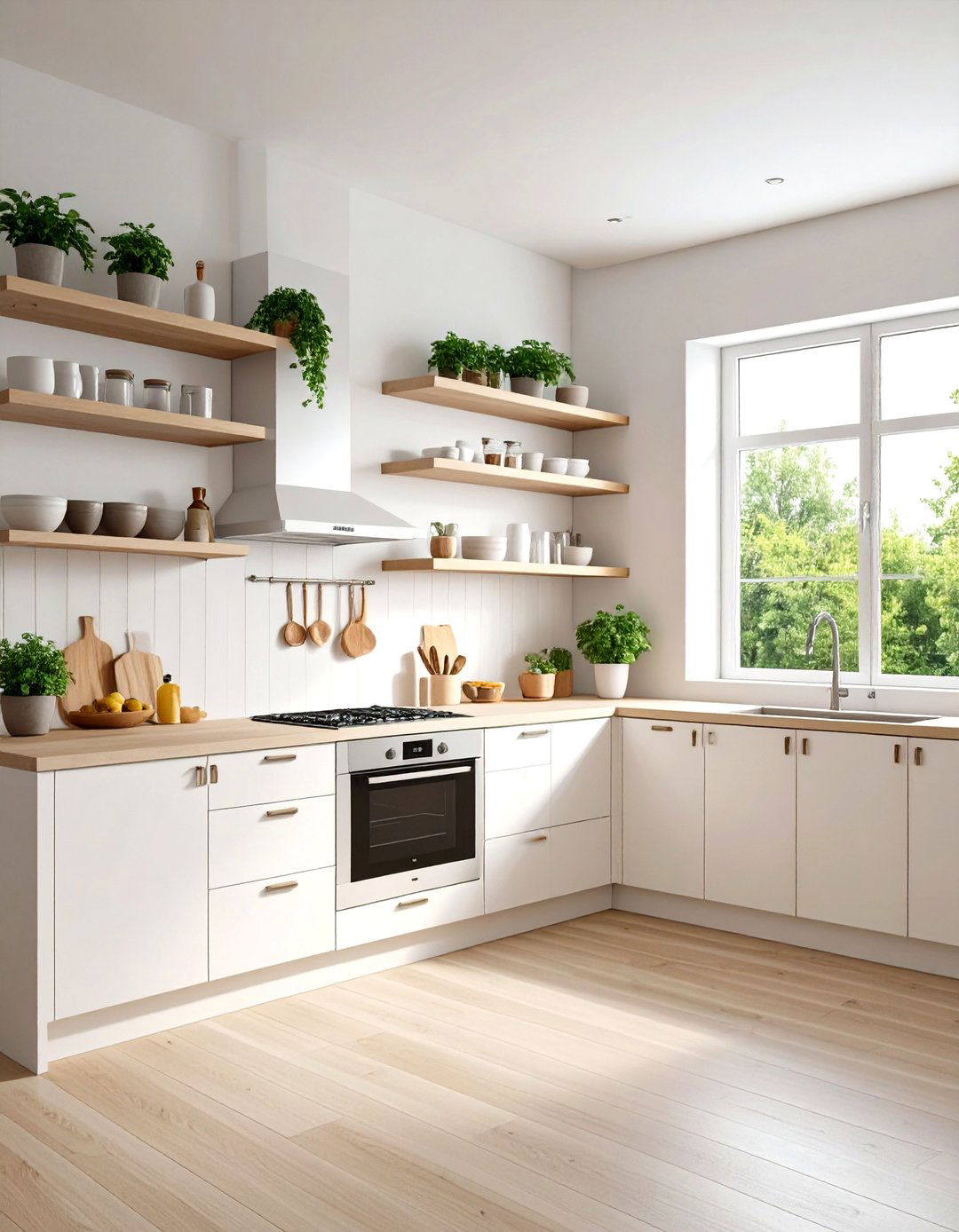
Incorporating floating shelves into your kitchen design can create an open and airy feel, especially if your space is small or lacks natural light. This design theme centers around sleek, wall-mounted shelves that appear to float effortlessly above the countertops. The minimalist approach features clean white or light wood shelves mounted against a neutral backdrop, paired with streamlined lower cabinets in matching tones. Metal shelves cross the window to provide more storage space without blocking the light completely while maintaining the kitchen's uncluttered aesthetic. Strategic placement of these shelves creates functional zones for displaying everyday dishes, glassware, and curated kitchen essentials, all while preserving the open, breathable feeling that makes this design so appealing to contemporary homeowners.
2. Open Rustic Kitchen Without Upper Cabinets
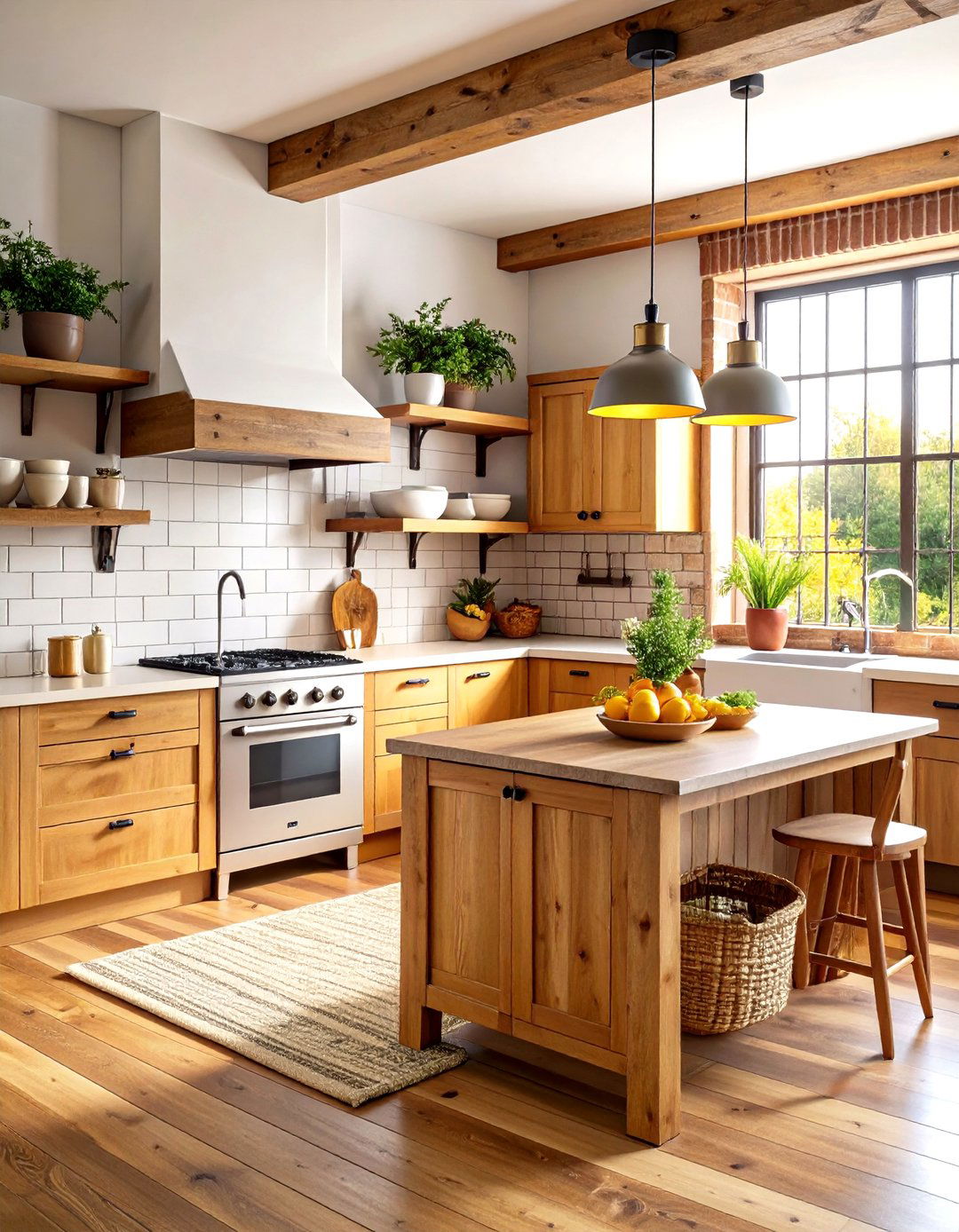
This charming design theme embraces natural materials and textures to create a warm, inviting atmosphere. Wood floating shelves against a backdrop of classic subway tile is the perfect modern combo. The warm, natural tones of the wood create a beautiful contrast with the sleek white tiles while adding authentic character to the space. The design features reclaimed wood shelving, exposed brick or stone backsplashes, and lower cabinets crafted from natural wood with visible grain patterns. Vintage-inspired hardware in aged brass or black iron complements the rustic aesthetic. Open shelving displays handcrafted ceramics, mason jars filled with pantry staples, and copper cookware, creating a lived-in, farmhouse-inspired environment that feels both functional and deeply personal while maintaining the spacious feeling of an upper-cabinet-free design.
3. Industrial Style Kitchen Without Upper Cabinets
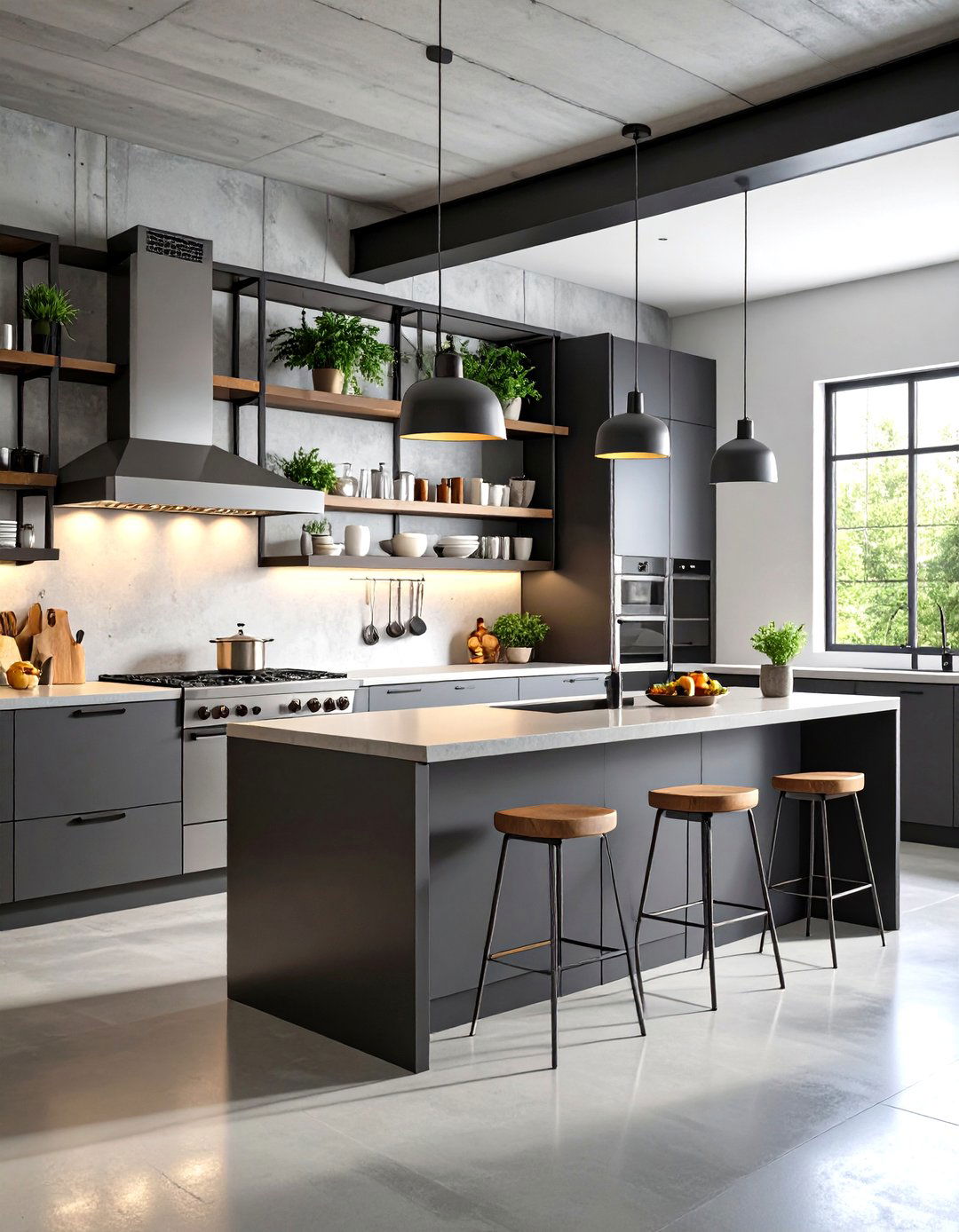
The industrial aesthetic thrives in kitchens without upper cabinets, emphasizing raw materials and urban sophistication. Metal shelving looks just as chic! Galvanized steel is the preferred shelving material in many industrial cooking spaces because it doesn't rust. This design theme features exposed metal shelving systems, often in black steel or galvanized finishes, mounted against concrete or brick walls. Lower cabinets showcase dark, matte finishes paired with stainless steel appliances and concrete countertops. The open wall space accommodates industrial-style pendant lighting and provides room for statement pieces like large-scale artwork or vintage signage. Storage solutions include wire baskets, metal containers, and hanging pot racks that maintain the utilitarian aesthetic while keeping frequently used items accessible and beautifully displayed.
4. Modern Glass Front Kitchen Without Upper Cabinets
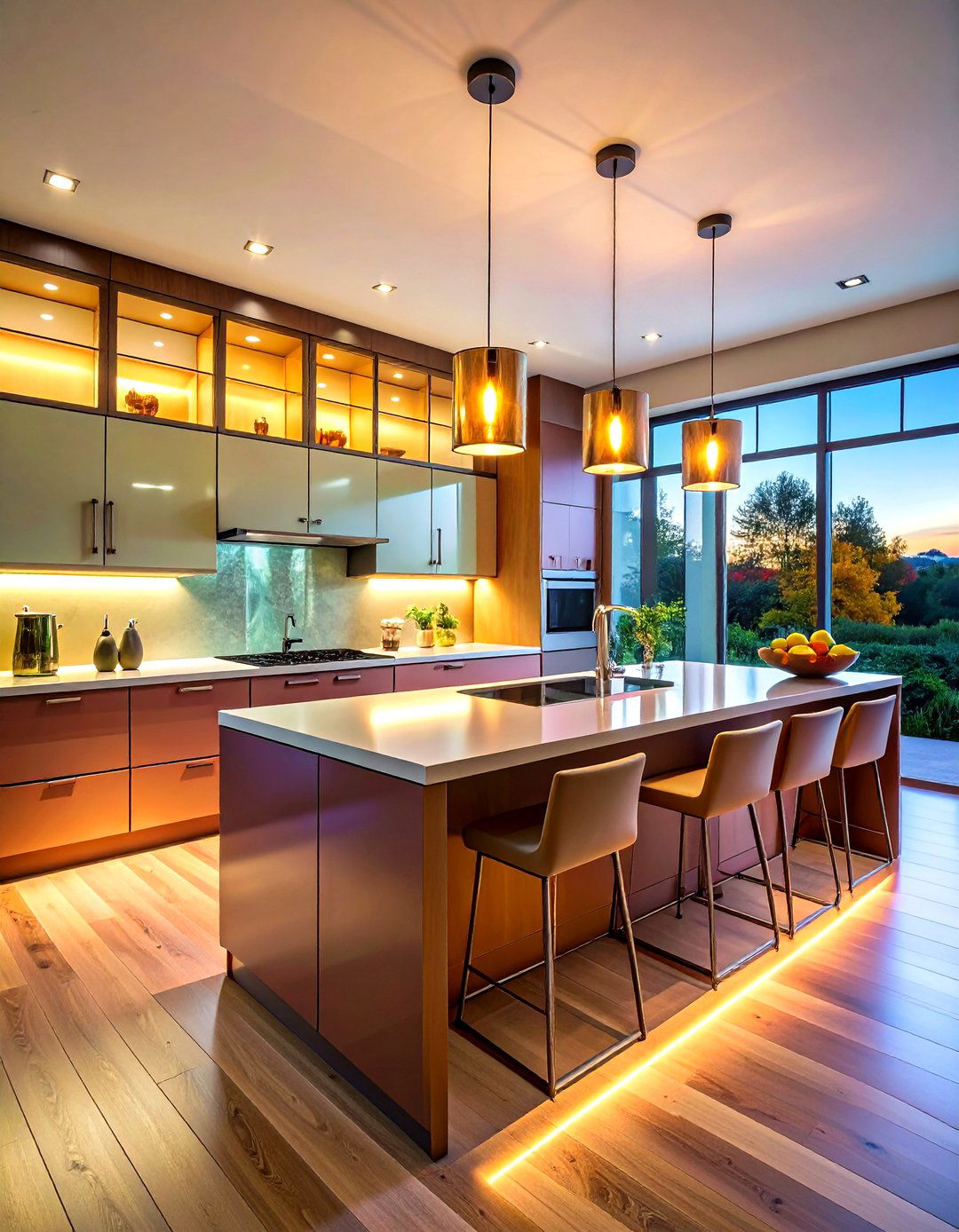
This sophisticated design approach combines the benefits of closed storage with the visual lightness of open shelving. Glass-front cabinets come at a higher price point than open shelves, but add a sophisticated touch to your kitchen that allows for more storage space than open shelving. The design features sleek glass-front cabinets mounted sparingly around key areas, paired with extensive open wall space that showcases dramatic backsplashes or large windows. Lower cabinets maintain clean, handleless profiles in contemporary finishes. The glass elements reflect light throughout the space while protecting displayed items from dust and cooking residue. Strategic interior lighting within the glass cabinets creates an elegant display effect, highlighting beautiful dishware and glassware while maintaining the airy feeling that defines upper-cabinet-free kitchens.
5. Scandinavian Kitchen Without Upper Cabinets
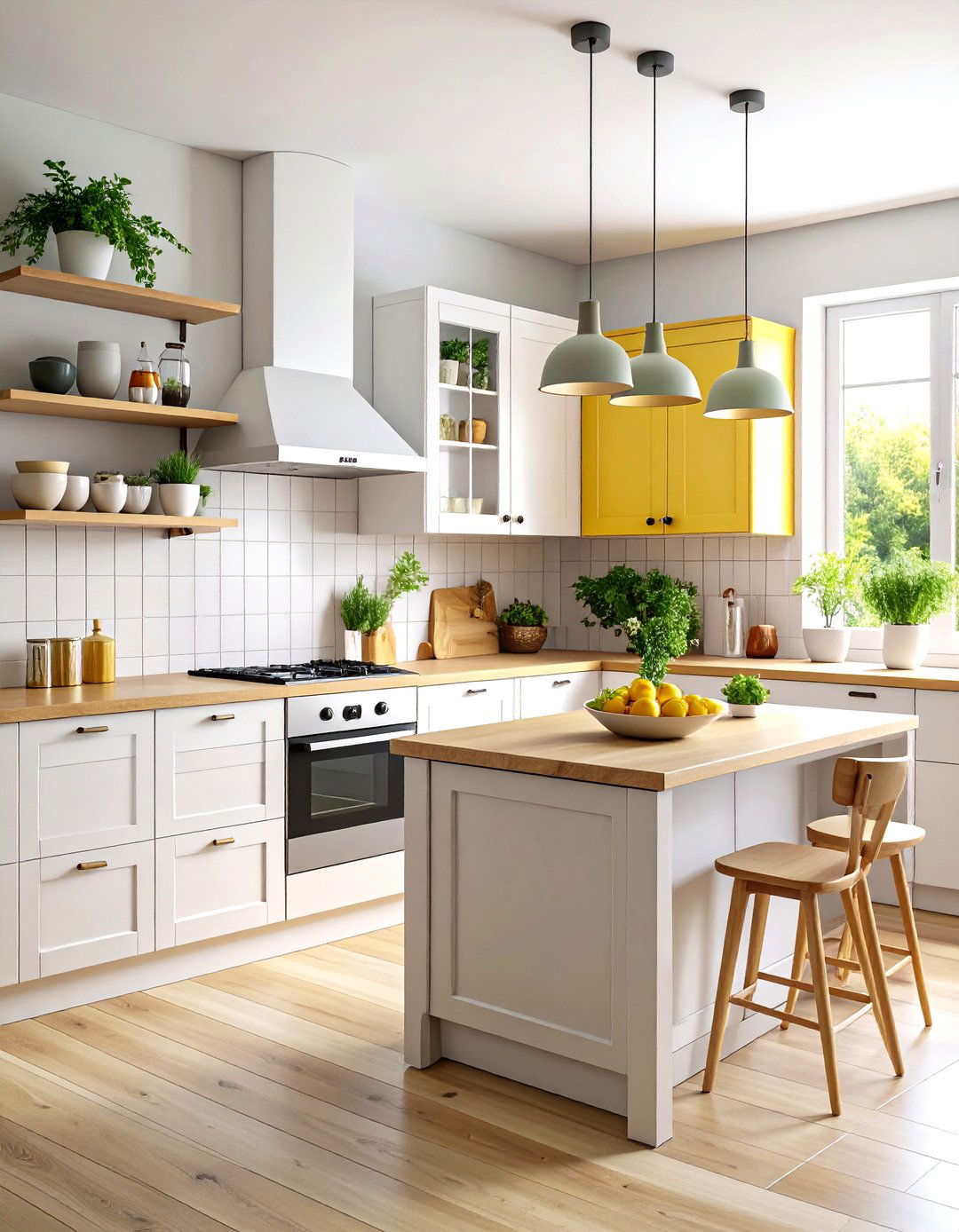
Embracing Nordic design principles, this theme creates a serene, functional environment focused on simplicity and natural light. Light wood tones are all the rage right now! Adding some light wooden shelves brings the color of the flooring up to cabinet height. The design features light wood shelving systems, often in birch or pine, paired with white or light gray lower cabinets. Clean lines dominate the aesthetic, with minimal hardware and seamless surfaces. The absence of upper cabinets allows maximum natural light to flood the space, enhanced by white walls and light-colored countertops. Storage solutions include wooden crates, woven baskets, and simple ceramic containers that maintain the clean, organic aesthetic. The overall effect is calming and purposeful, with every element serving both functional and aesthetic purposes.
6. Contemporary Kitchen Without Upper Cabinets and Statement Backsplash
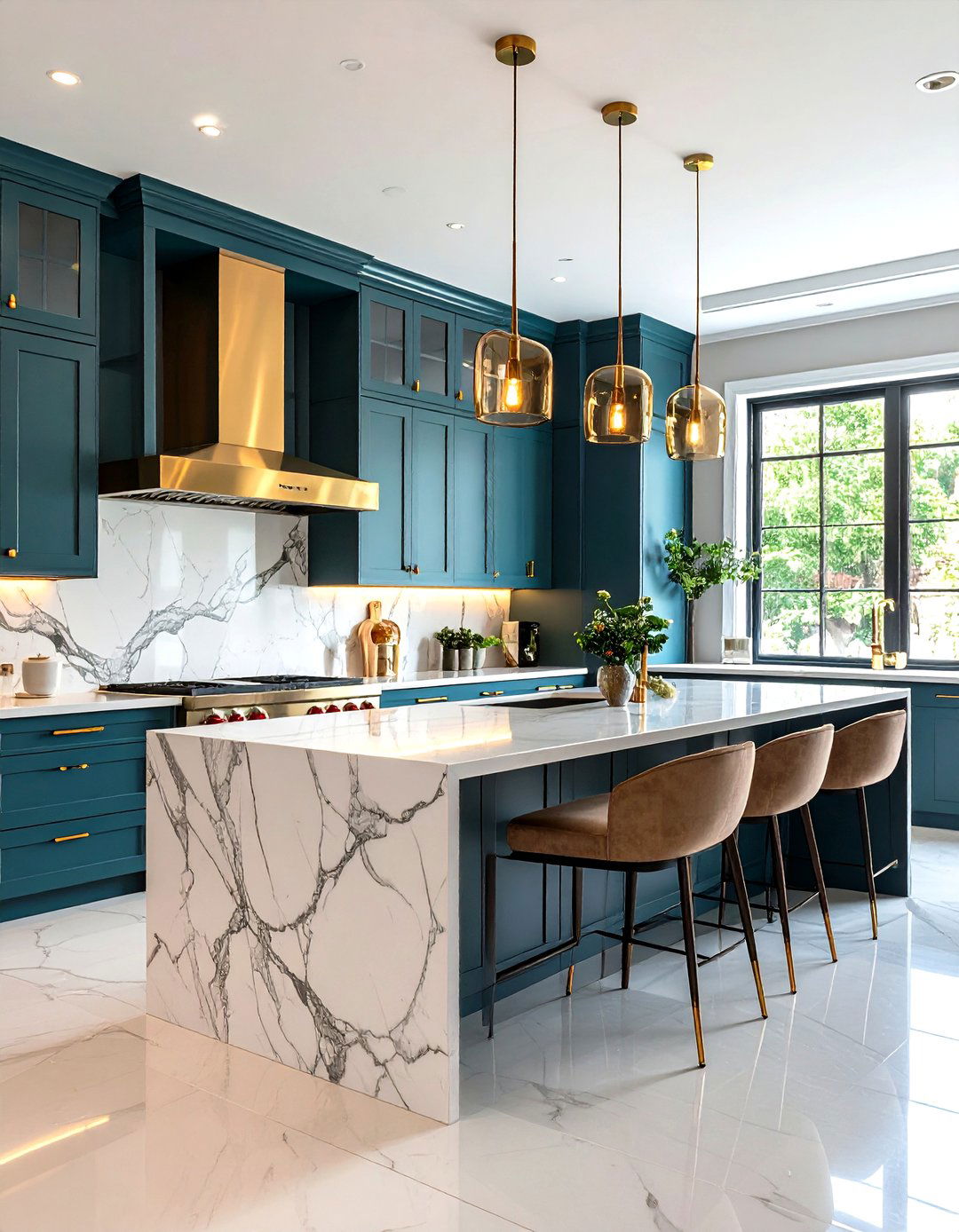
This design theme transforms the wall space above countertops into a dramatic focal point through bold backsplash treatments. When designing a kitchen without upper cabinets, the backsplash takes on even greater importance as one of the few surfaces drawing the eye upwards. The contemporary approach features floor-to-ceiling backsplashes in materials like marble, natural stone, or bold ceramic tiles that create stunning visual impact. Natural stone tiles like marble, travertine or limestone lend luxury to a kitchen backsplash no upper cabinets. Lower cabinets maintain sleek, modern profiles in neutral tones that complement the statement wall. The design often incorporates integrated lighting to highlight the backsplash texture and create ambient atmosphere. This approach successfully balances the functional needs of the kitchen with striking visual elements that define the space's character.
7. Transitional Kitchen Without Upper Cabinets and Mixed Materials
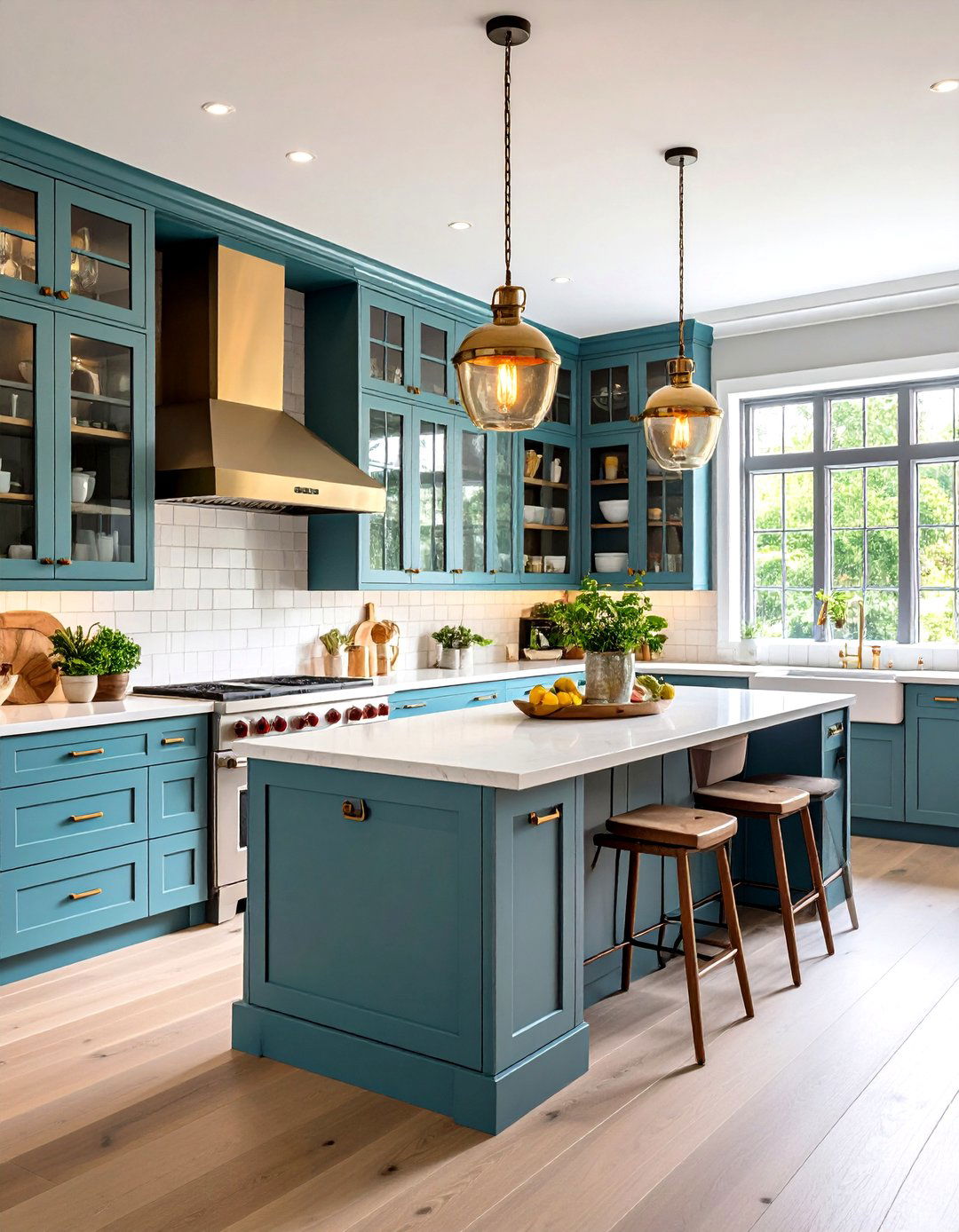
This versatile design theme seamlessly blends traditional and contemporary elements while maintaining an open, airy atmosphere. You can always mix and match upper cabinets and open shelves. If your kitchen is big enough and you can afford losing one or more upper cabinets in exchange for some floating shelves, this approach offers the best of both worlds. The design features a combination of open shelving areas, selective glass-front cabinets, and extensive open wall space. Lower cabinets showcase two-tone finishes, often pairing painted surfaces with natural wood elements. The mixed-material approach extends to countertops and backsplashes, creating visual interest and depth. This design philosophy allows homeowners to gradually transition from traditional upper cabinets while maintaining necessary storage functionality and creating a personalized, evolved aesthetic that feels both timeless and contemporary.
8. Kitchen Island-Focused Design Without Upper Cabinets
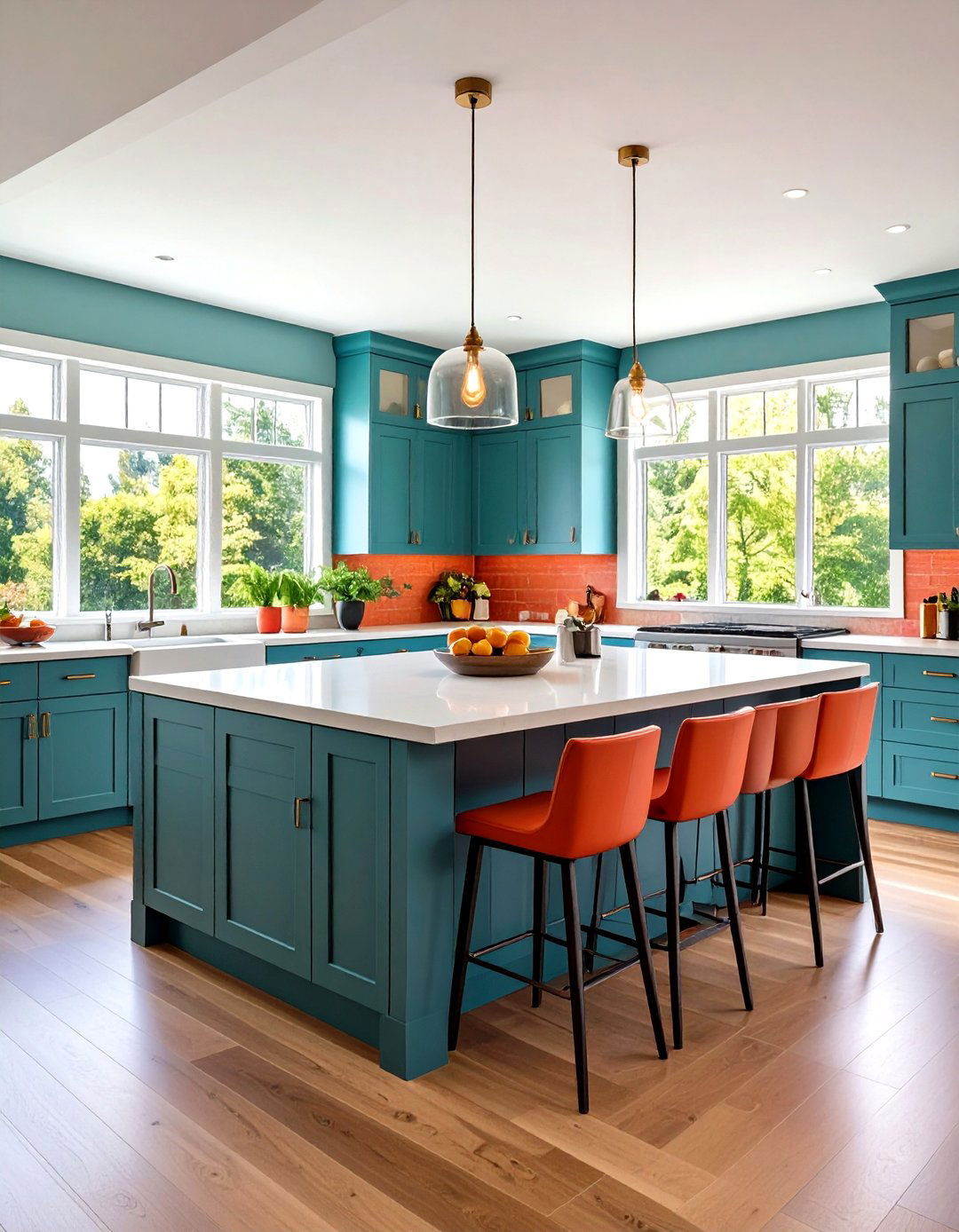
This design theme maximizes storage and functionality through an oversized, multi-functional island that compensates for the absence of upper cabinets. The addition of an island could be the key to securing adequate storage space without having to give up the clean minimalism and modern aesthetic. The island becomes the kitchen's centerpiece, featuring extensive drawer storage, open shelving, and seating areas. Kitchen islands can also provide open counter space for food preparation or can be used as a gathering place with comfortable seating. The perimeter walls showcase minimal lower cabinets paired with dramatic backsplashes or large windows. The design creates natural workflow zones while maintaining the open, uncluttered feeling that defines upper-cabinet-free kitchens. This approach works particularly well in larger spaces where the island can serve multiple functions without overwhelming the room's proportions.
9. Window-Focused Kitchen Without Upper Cabinets
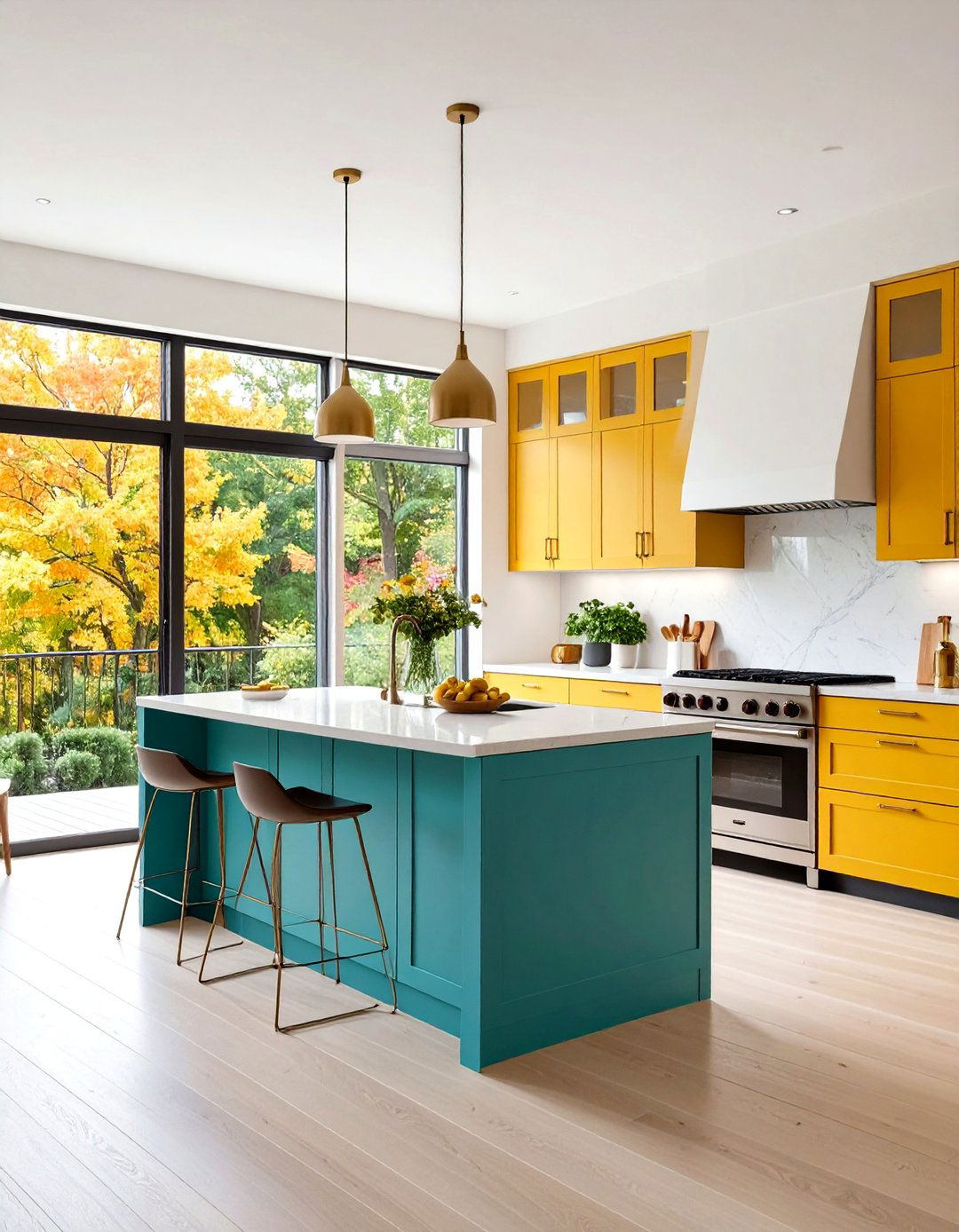
This design theme celebrates natural light and outdoor views by replacing traditional upper cabinets with expansive windows. Placing windows under cabinets brings light into kitchens in new and unexpected ways. Not only do you get the benefit of more natural light in typically darker areas, you get a greater connection to the outdoors. The design features large windows positioned where upper cabinets typically reside, creating seamless indoor-outdoor connections. These see-through glass backsplashes sit flush with the counter-top creating an almost seamless transition to the outdoors. Lower cabinets maintain clean, simple profiles that don't compete with the window views. The natural light eliminates the need for excessive artificial lighting while creating an uplifting, spacious atmosphere. This approach works particularly well in kitchens with scenic outdoor settings or gardens, transforming routine cooking tasks into more enjoyable experiences.
10. Mediterranean Kitchen Without Upper Cabinets

This warm, inviting design theme draws inspiration from European coastal regions, emphasizing natural materials and relaxed sophistication. The design features open shelving crafted from reclaimed wood or wrought iron, paired with colorful ceramic tiles and natural stone elements. Lower cabinets showcase painted finishes in warm earth tones or deep blues, complemented by brass or copper hardware. The absence of upper cabinets creates space for decorative elements like hand-painted tiles, exposed beam details, or small windows that enhance the Mediterranean atmosphere. Open shelving displays colorful ceramics, olive oil bottles, and herbs in terracotta pots, creating a lived-in feeling that celebrates the region's culinary traditions. The overall effect is both casual and elegant, perfect for homeowners who enjoy entertaining and appreciate authentic, artisanal details in their living spaces.
11. Modern Farmhouse Kitchen Without Upper Cabinets

This popular design theme combines rustic charm with contemporary functionality, creating spaces that feel both timeless and current. Traditional upper cabinetry can feel heavy when it spans the entire length of kitchen. Instead, opt for uppers on one side and open shelving on the other. The design features shiplap or board-and-batten walls, complemented by open shelving in natural wood finishes. Lower cabinets showcase classic shaker-style doors in neutral colors, paired with farmhouse sinks and vintage-inspired hardware. The open wall space accommodates decorative elements like antique signs, woven baskets, and mason jar storage systems. This approach successfully balances the desire for modern convenience with the warmth and character of traditional farmhouse design, creating kitchens that feel both sophisticated and welcoming to family and guests.
12. Galley Kitchen Without Upper Cabinets
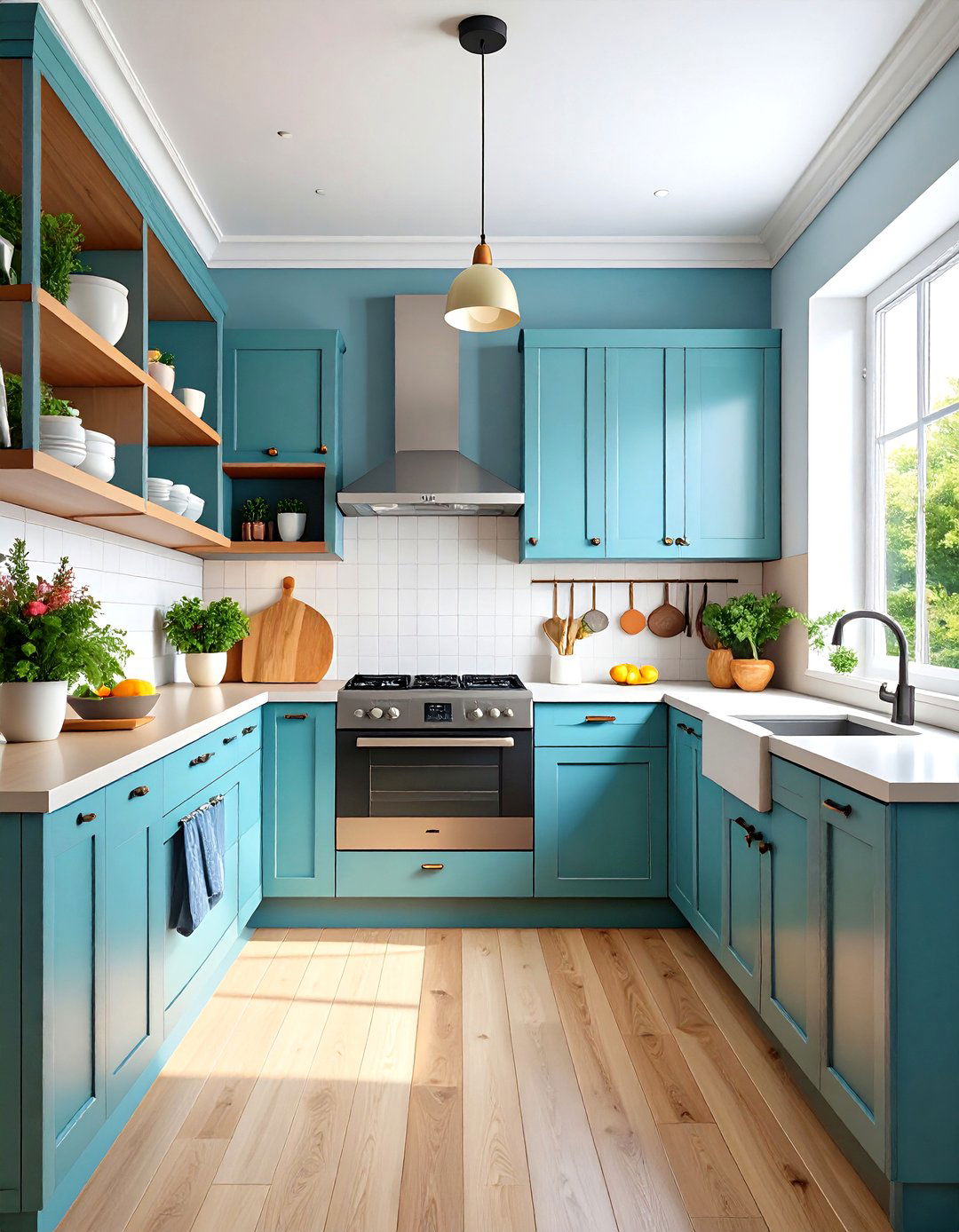
This space-efficient design theme maximizes functionality in narrow kitchen layouts while maintaining an open, uncluttered feeling. If space is limited, especially in a galley kitchen, nix bulky upper cabinets that can make a narrow layout feel even more narrow. The design features streamlined lower cabinets along both walls, paired with minimal floating shelves positioned strategically to avoid visual crowding. Interior designer Tiffany Gowler opts for slim, open shelving to store dinnerware and glassware. The absence of upper cabinets allows natural light to flow freely through the space, making it feel larger and more connected. Smart storage solutions include pull-out drawers, vertical dividers, and wall-mounted rails for utensils and small appliances. This approach transforms potentially cramped galley kitchens into efficient, attractive spaces that feel surprisingly spacious and functional.
13. Luxury Kitchen Without Upper Cabinets and Natural Stone
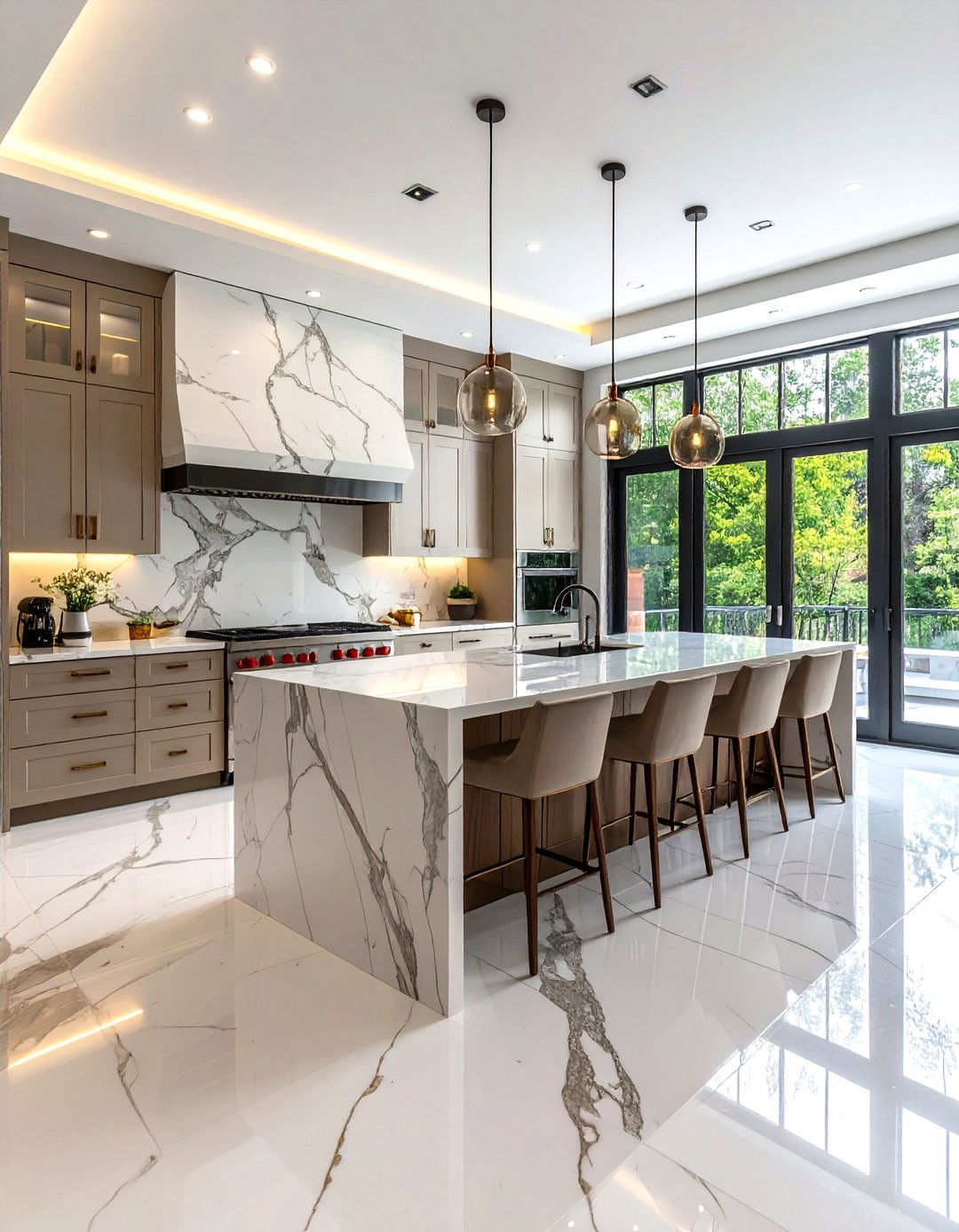
This sophisticated design theme emphasizes premium materials and seamless surfaces to create an upscale, resort-like atmosphere. A slab of marble running from the countertop to the ceiling creates a seamless look that is both modern and timeless. The design features floor-to-ceiling natural stone installations, often in marble or quartzite, that serve as both backsplash and focal point. Lower cabinets showcase high-end finishes like lacquered surfaces or exotic wood veneers, paired with integrated appliances and hidden storage solutions. The unique veining in natural stone adds character, making each kitchen one-of-a-kind. Minimal shelving, when used, complements the stone elements through matching materials or coordinating metallic finishes. This approach creates kitchens that feel like private retreats, emphasizing quality over quantity in every design decision.
14. Eclectic Kitchen Without Upper Cabinets

This creative design theme celebrates personal expression through mixed materials, colors, and textures while maintaining functional efficiency. Abundant in authentic features, this eclectic kitchen forms part of a London apartment rich in textures and pops of colors. The design combines various shelving materials - wood, metal, and glass - in asymmetrical arrangements that create visual interest. Lower cabinets might feature different colors or finishes, unified through coordinating hardware or countertop materials. The floating shelf is supported by gold brackets coordinating with an oil-rubbed brass tap and wall sconce. The open wall space accommodates artwork, collections, and decorative elements that reflect the homeowner's personality. This approach works particularly well for creative individuals who enjoy evolving their space over time, as the absence of upper cabinets allows for easy rearrangement and seasonal updates.
15. Pantry-Integrated Kitchen Without Upper Cabinets
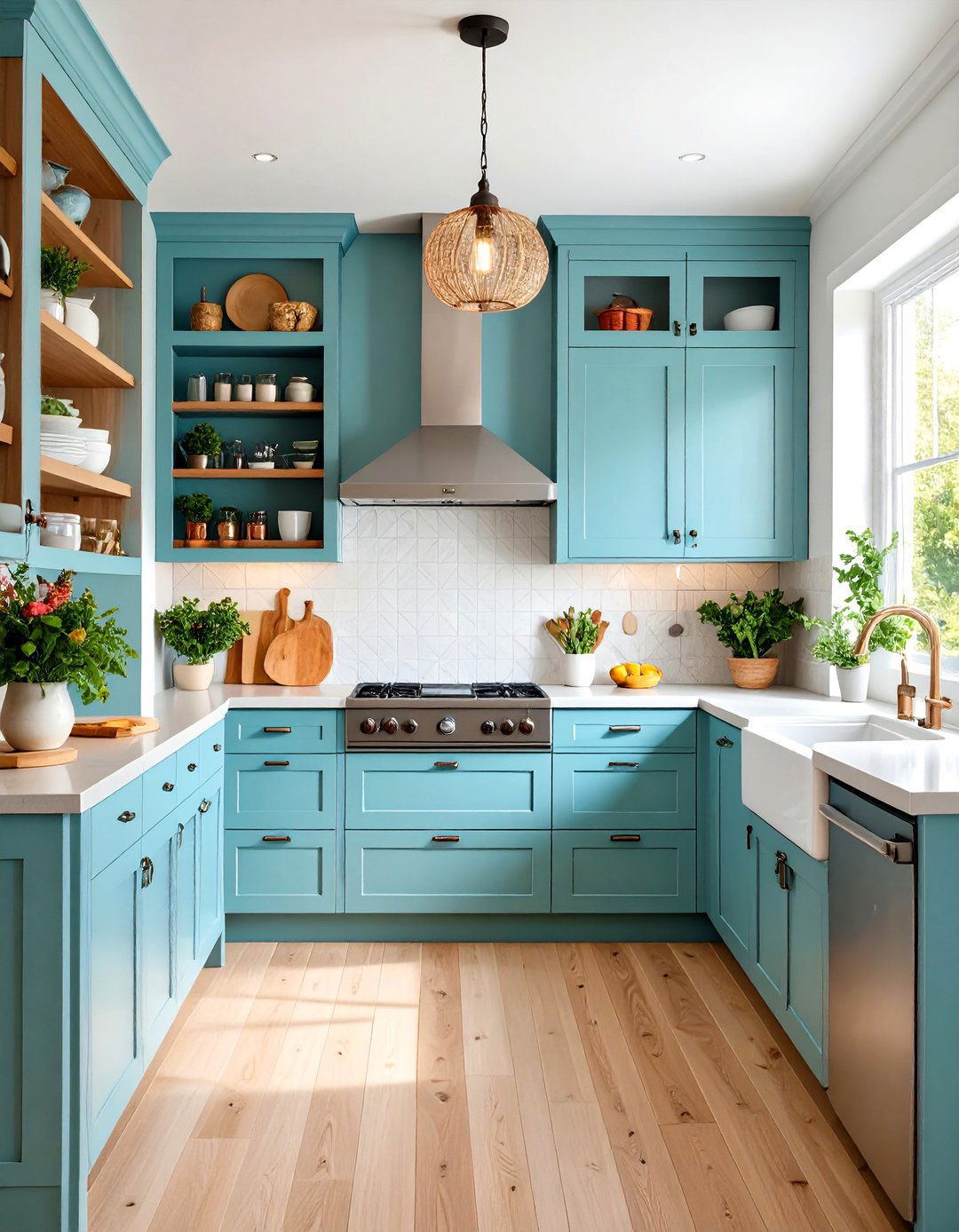
This highly functional design theme compensates for lost upper storage through dedicated pantry solutions and strategic organization systems. If you've ever fantasized about having a secret room in your home, a butler's pantry is your stylish answer. The design features a separate pantry area or room that houses bulk storage, small appliances, and specialty items typically stored in upper cabinets. The main kitchen showcases minimal lower cabinets paired with open shelving for everyday items. It's a hidden gem where you can prep, store, and even sneak snacks without cluttering up your main kitchen. The pantry area might include floor-to-ceiling storage, pull-out drawers, and specialized organizers that maximize every square inch. This approach creates a clean, uncluttered main kitchen while ensuring that storage needs are fully met through thoughtful planning and dedicated spaces.
16. Colorful Kitchen Without Upper Cabinets
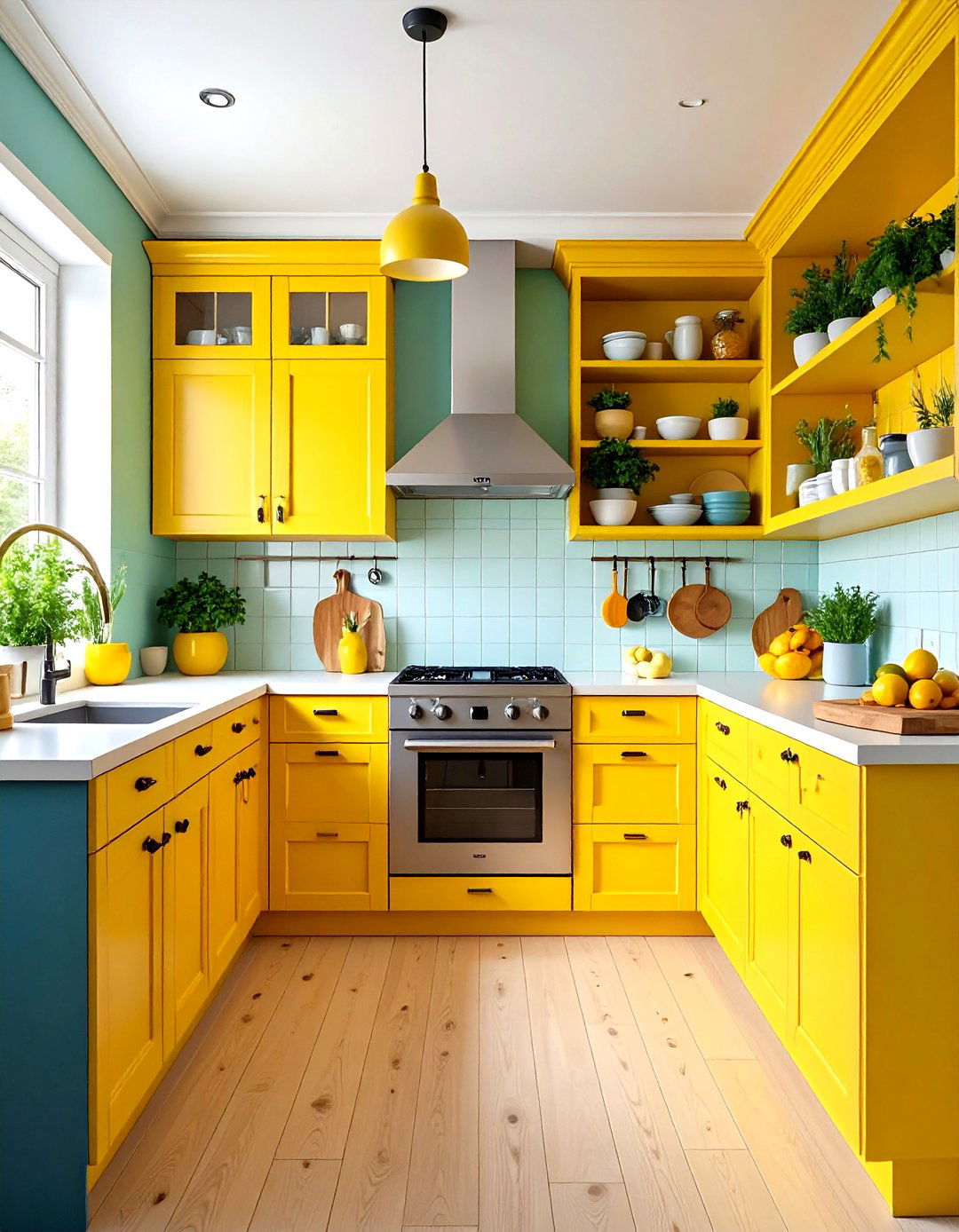
This vibrant design theme uses bold colors and patterns to create energetic, personality-filled spaces that celebrate creativity and joy. Rich red and yellows being the most popular this year according to industry experts, with homeowners taking more risks with their color choices. The design features brightly colored lower cabinets - perhaps in deep emerald, sunny yellow, or rich navy - paired with complementary open shelving in coordinating or contrasting finishes. The open wall space accommodates colorful backsplashes, artwork, or decorative elements that enhance the vibrant atmosphere. There is something comforting and optimistic about a yellow kitchen that feels timeless while still feeling fresh and contemporary. This approach works particularly well for homeowners who want their kitchen to serve as an energizing focal point of their home, creating spaces that feel both functional and celebratory.
17. Minimalist Kitchen Without Upper Cabinets
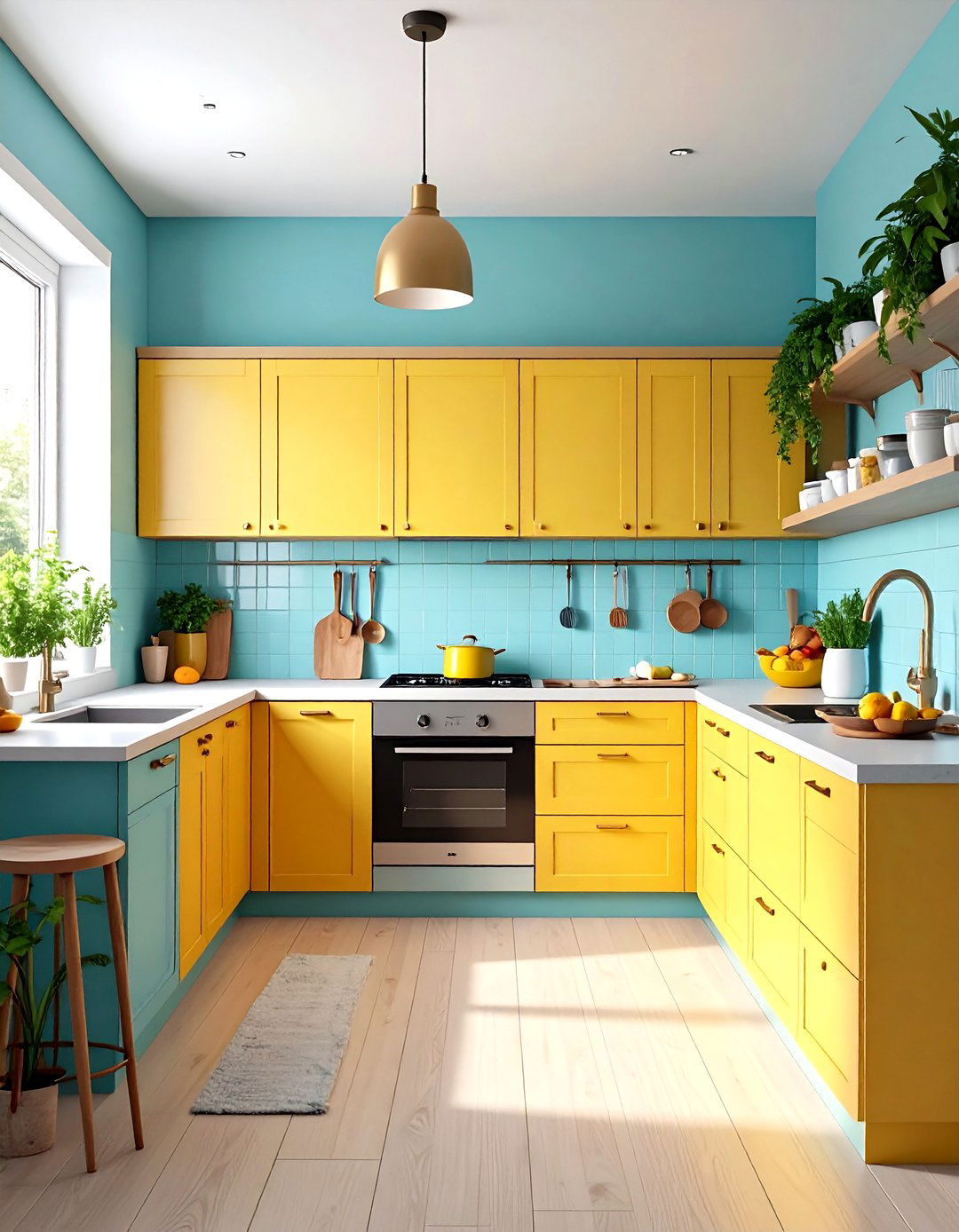
This serene design theme embraces the principle that less is more, creating spaces that feel calm, organized, and purposeful. Clear your kitchen of fuss and clutter with a thoughtfully designed, minimalist layout. The design features streamlined lower cabinets with handleless doors, minimal countertop appliances, and carefully curated open shelving that displays only essential items. Think cabinets and appliances with push-to-open technology, plenty of pantry space, floor-to-ceiling cabinetry, easy-to-clean quartz countertops, and grout-free floors. The color palette remains neutral and monochromatic, with white, gray, or natural wood dominating the space. Hidden storage solutions and integrated appliances maintain the clean aesthetic while ensuring full functionality. This approach creates kitchens that feel like peaceful retreats, perfect for homeowners who appreciate simplicity and order in their daily lives.
18. Traditional Kitchen Without Upper Cabinets

This classic design theme adapts timeless elements to create sophisticated spaces that honor traditional aesthetics while embracing contemporary openness. British-inspired kitchens are having a moment. These designs channel the charm of a countryside cottage with a modern twist. The design features traditional lower cabinets with classic door styles, paired with open shelving that displays fine china, crystal, and heirloom pieces. Think classic shaker cabinets, stand alone cabinets, hutch cabinets, elegant hardware, and cozy nooks. The open wall space accommodates traditional elements like plate rails, decorative moldings, or hutch-style displays that create visual interest without overwhelming the space. This approach successfully modernizes traditional kitchen design while maintaining the warmth and character that defines classic styling, creating spaces that feel both familiar and refreshingly contemporary.
19. Two-Tone Kitchen Without Upper Cabinets
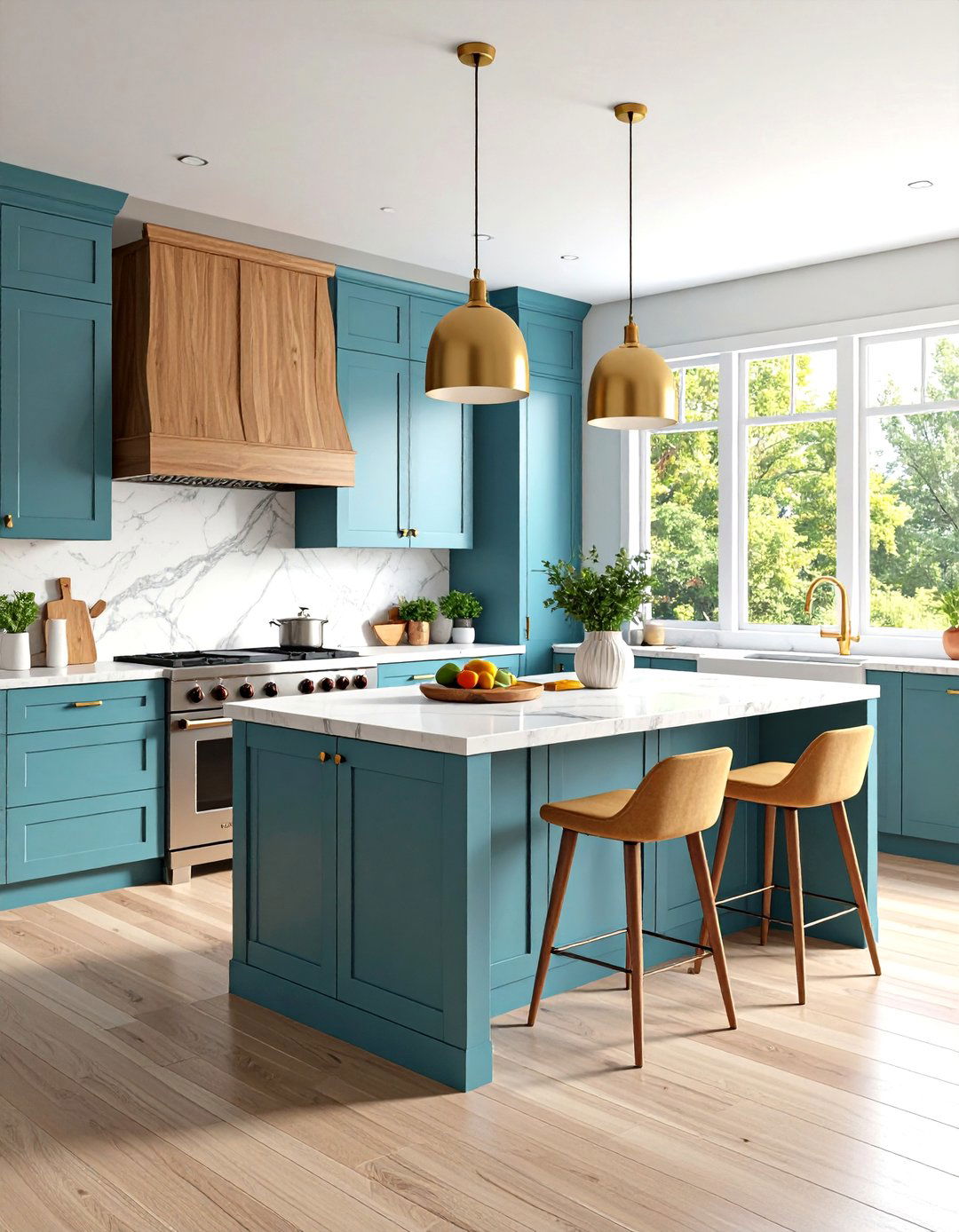
This sophisticated design theme uses contrasting colors and finishes to create visual depth and interest while maintaining an open, airy atmosphere. This year will bring cabinet towers in stained wood with lower cabinets in a painted finish. The design typically features an island or peninsula in one color or material, contrasted with perimeter cabinets in a complementary finish. The baking area has a practical marble top, while the island is topped with butcher block and has wood drawers underneath. Open shelving elements might coordinate with either the primary or secondary color, creating cohesion throughout the space. This approach adds visual interest and allows homeowners to incorporate both warm and cool tones, creating kitchens that feel dynamic and layered while maintaining the spacious feeling that defines upper-cabinet-free design.
20. Chef-Inspired Kitchen Without Upper Cabinets
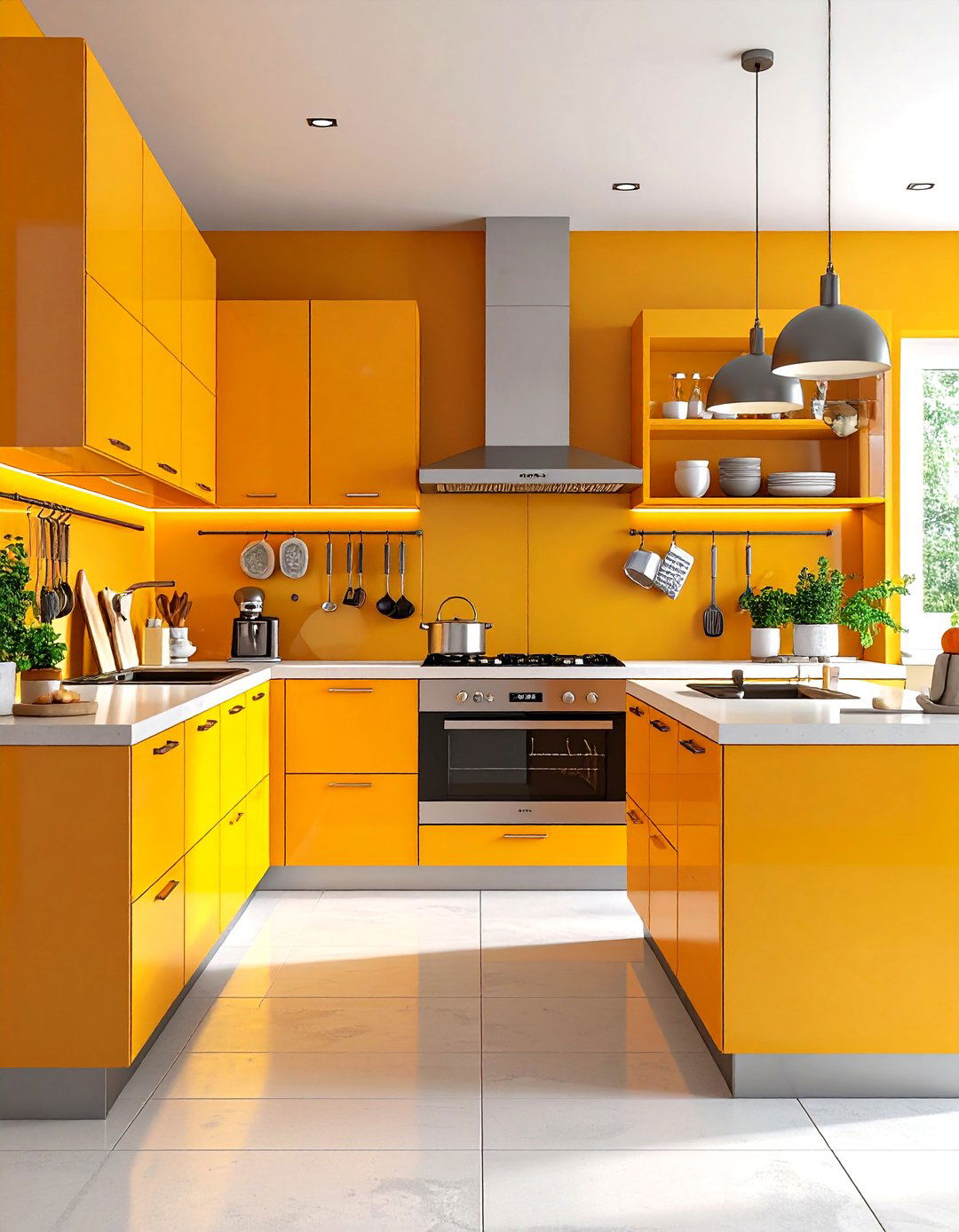
This professional design theme prioritizes functionality and efficiency while creating spaces that inspire culinary creativity. Open shelves in the kitchen can also be handy for avid home cooks. When arranged above counter space, they can serve as a workstation for items you frequently reach for, like pots, pans, plates. The design features commercial-grade appliances, extensive lower storage with deep drawers, and strategic open shelving that keeps essential cooking tools within easy reach. Whipping up dinner isn't a problem when you've got all of your ingredients close by. Put everything into matching glass canisters, then add sleek labels. The absence of upper cabinets allows for professional-style pot racks, magnetic knife strips, and other organizational systems that serious cooks appreciate. This approach creates kitchens that feel like professional culinary workshops while maintaining the clean, uncluttered aesthetic that makes cooking both efficient and enjoyable.
Conclusion:
Kitchens without upper cabinets represent a significant shift toward more open, light-filled spaces that prioritize both aesthetics and functionality. These design approaches successfully address storage needs through creative solutions like extended islands, dedicated pantries, and strategic shelving systems. The absence of upper cabinets allows for dramatic backsplashes, expanded windows, and better natural light distribution throughout the space. Whether embracing minimalist sophistication, rustic charm, or bold contemporary statements, these designs prove that eliminating upper cabinets doesn't mean sacrificing functionality. Instead, they create opportunities for more personalized, efficient, and visually appealing kitchens that better serve modern lifestyles and entertaining needs.


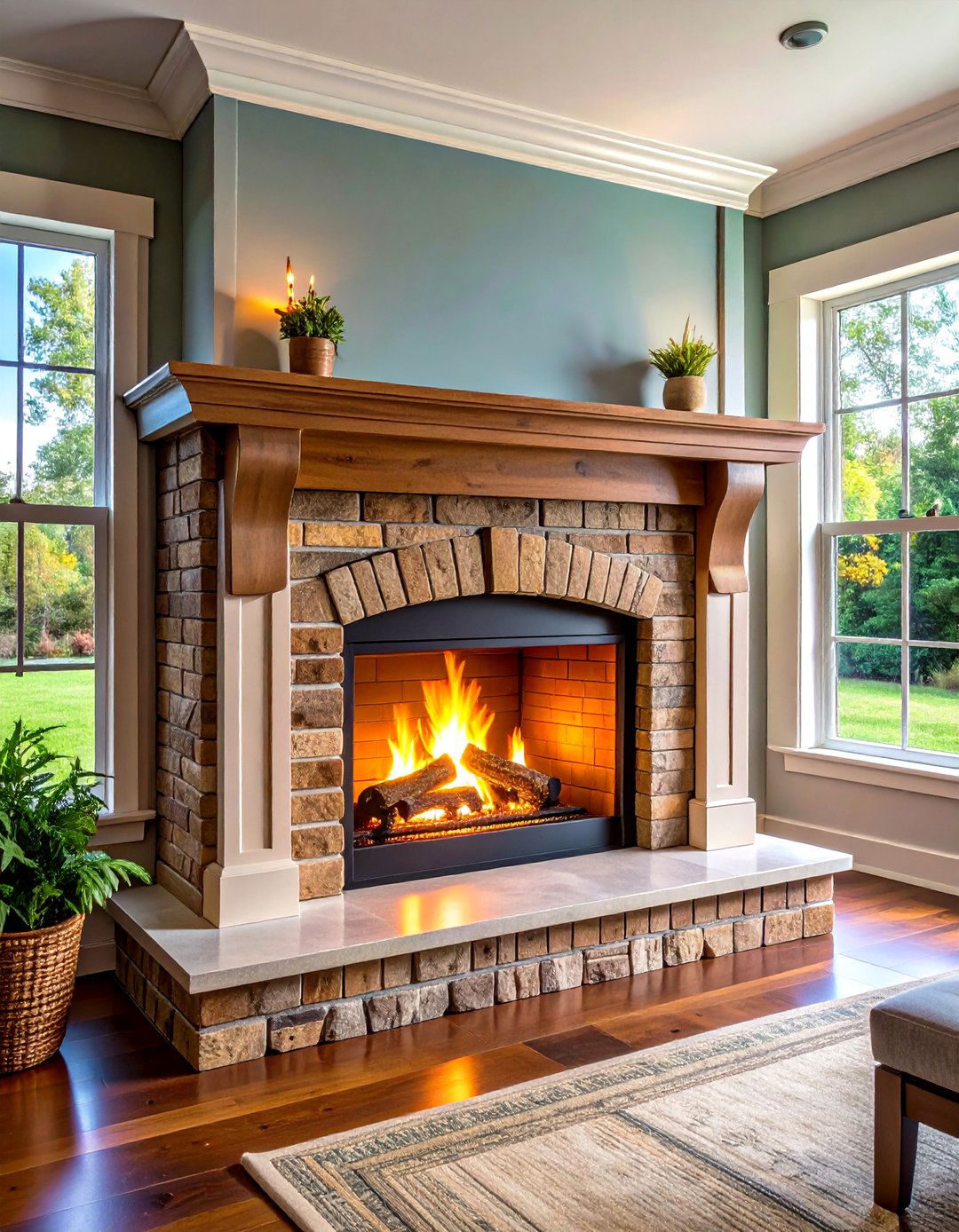
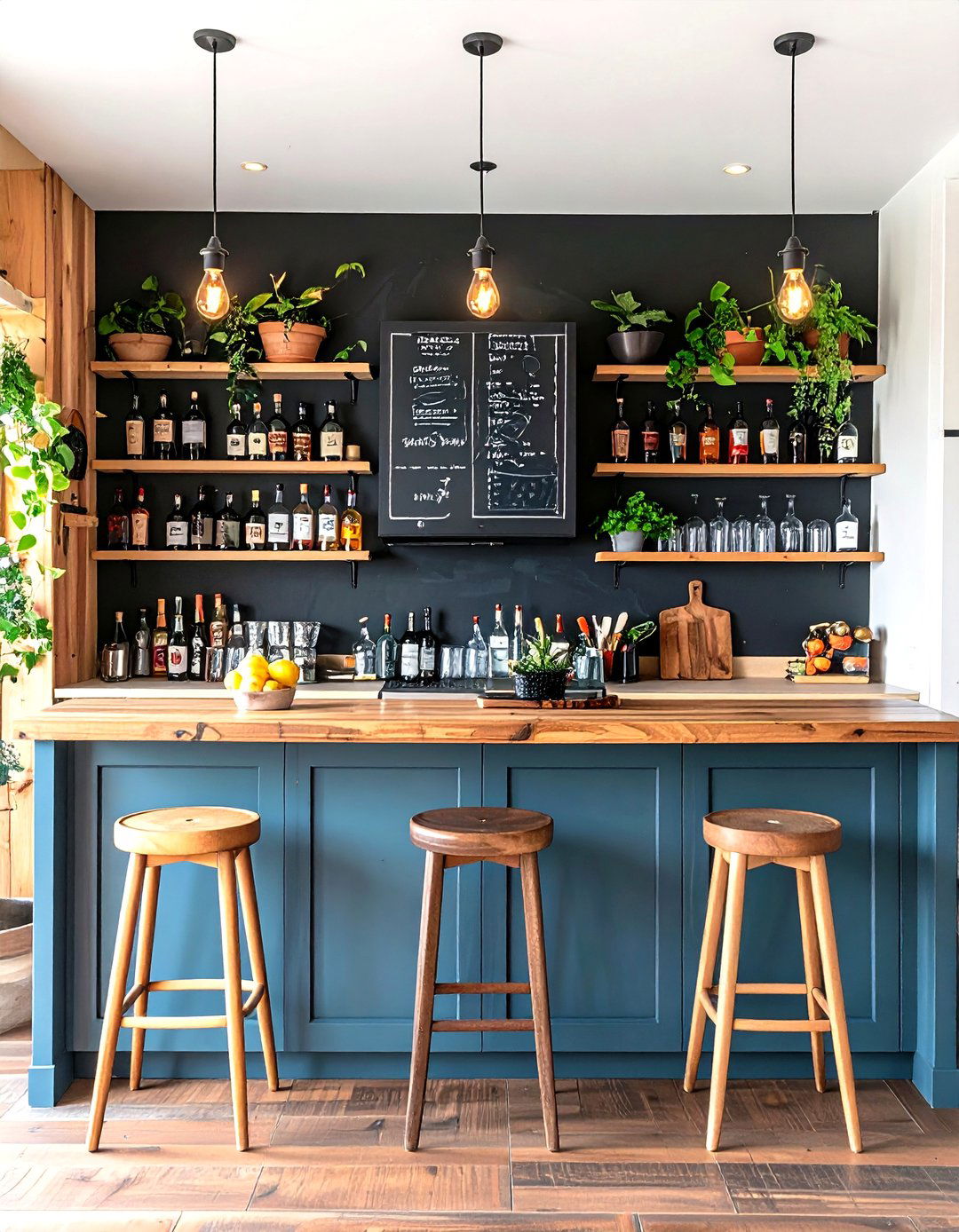
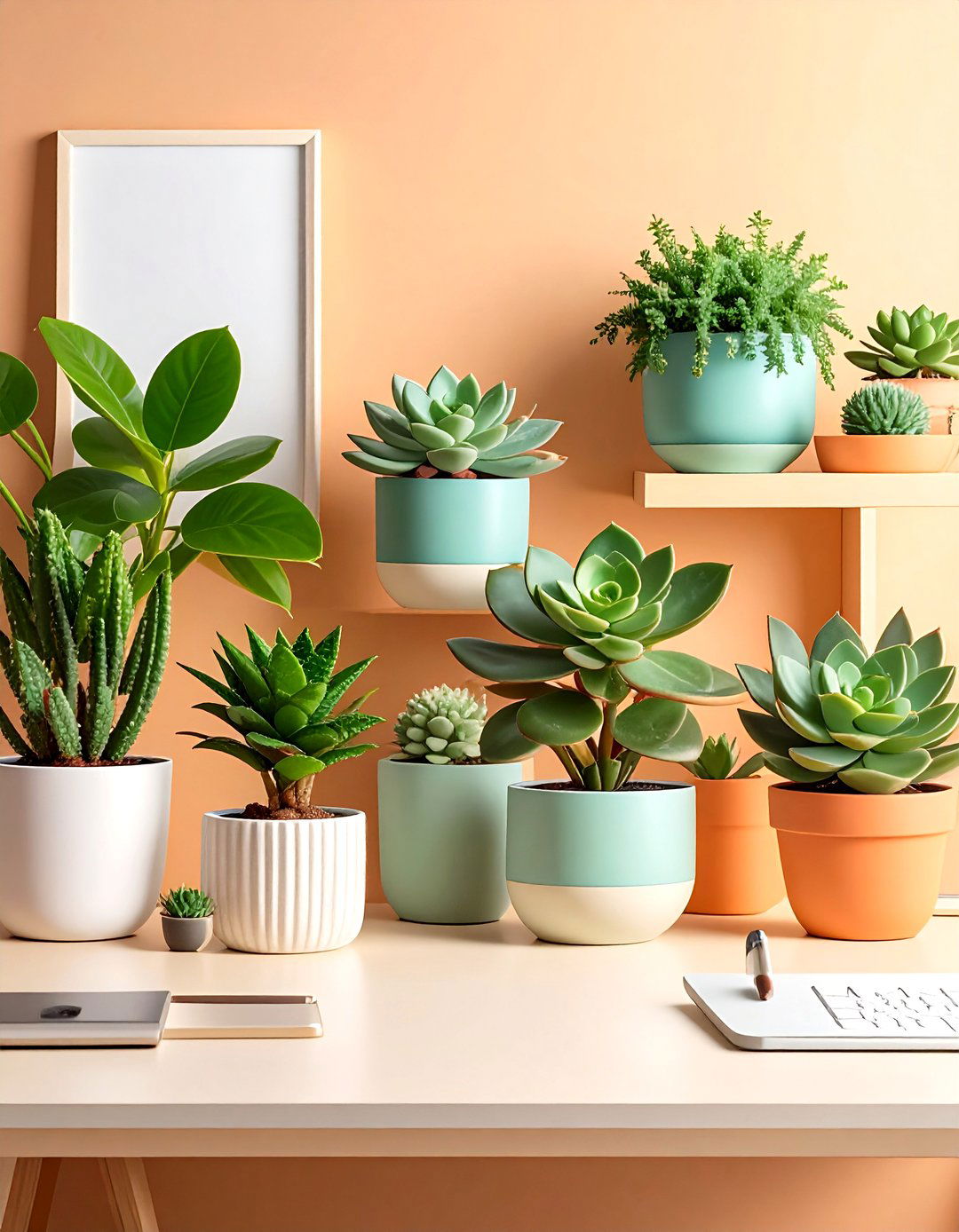
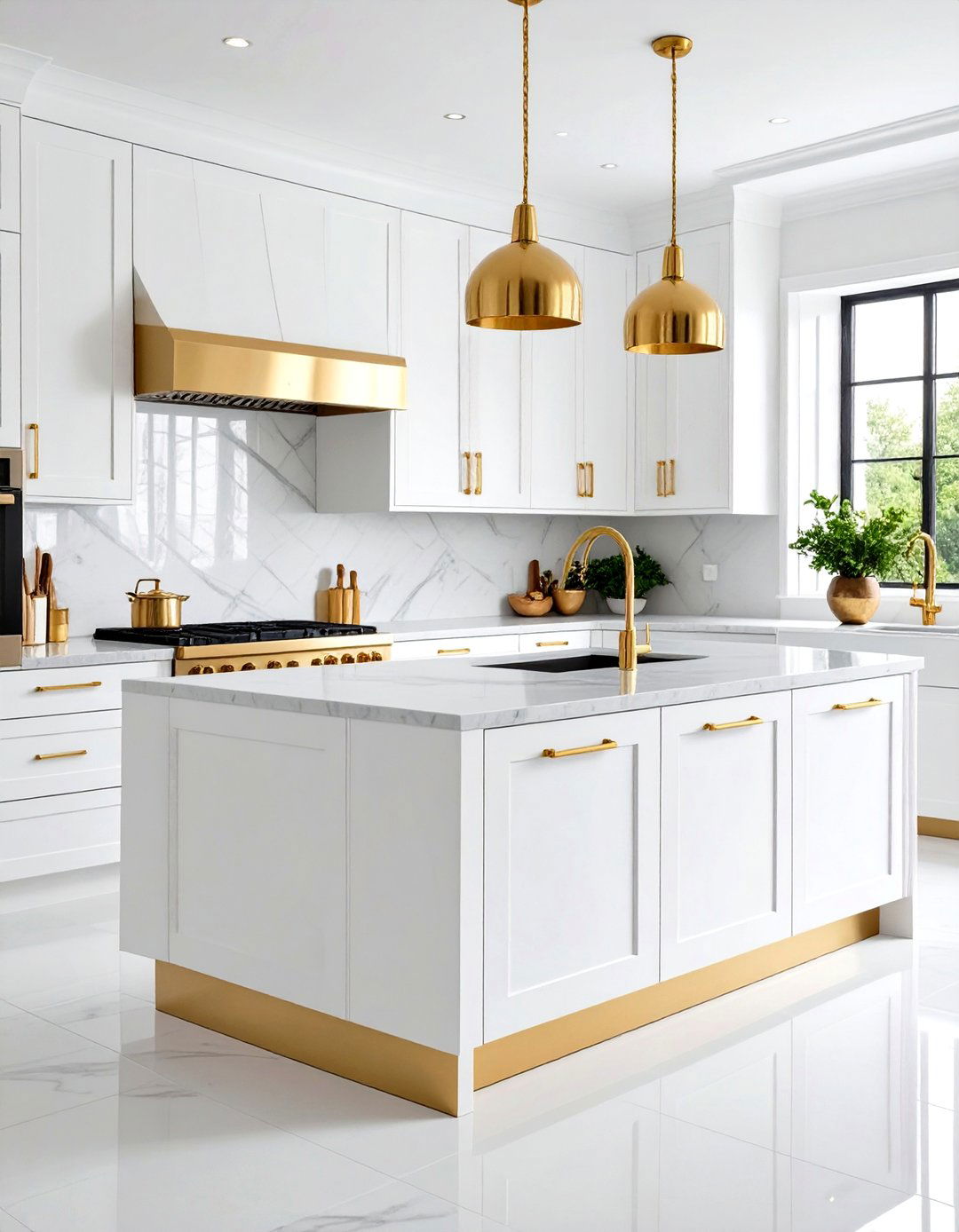

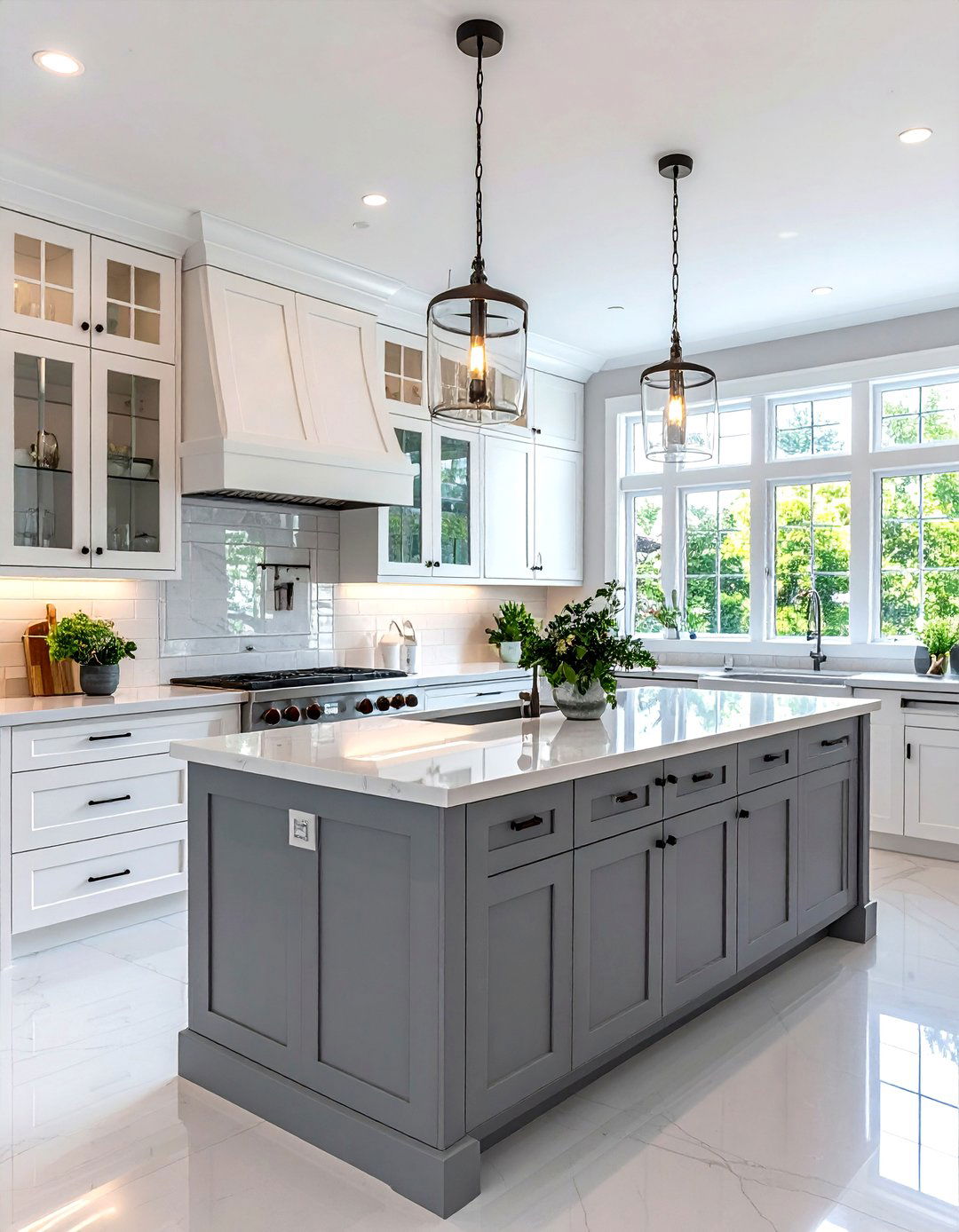
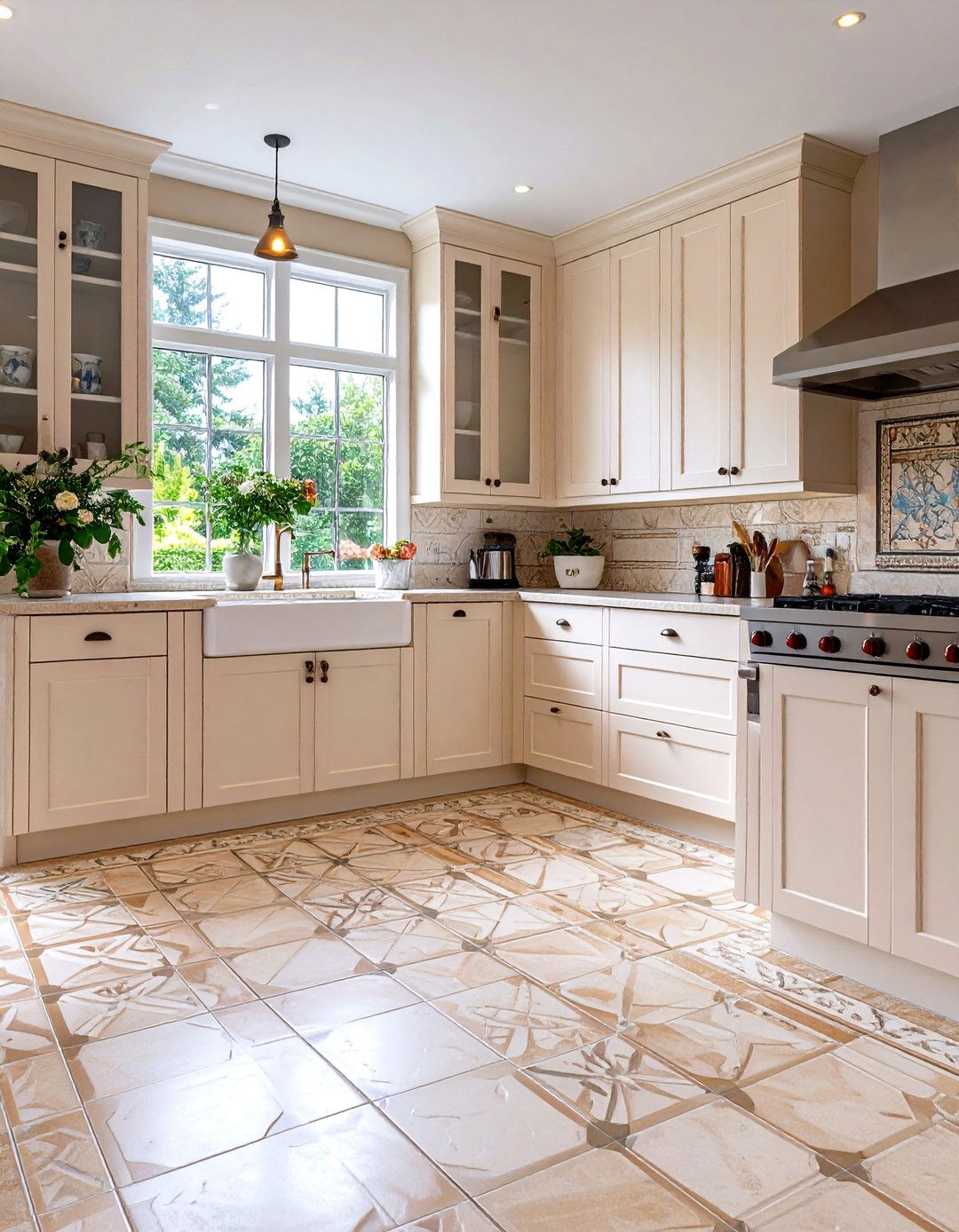
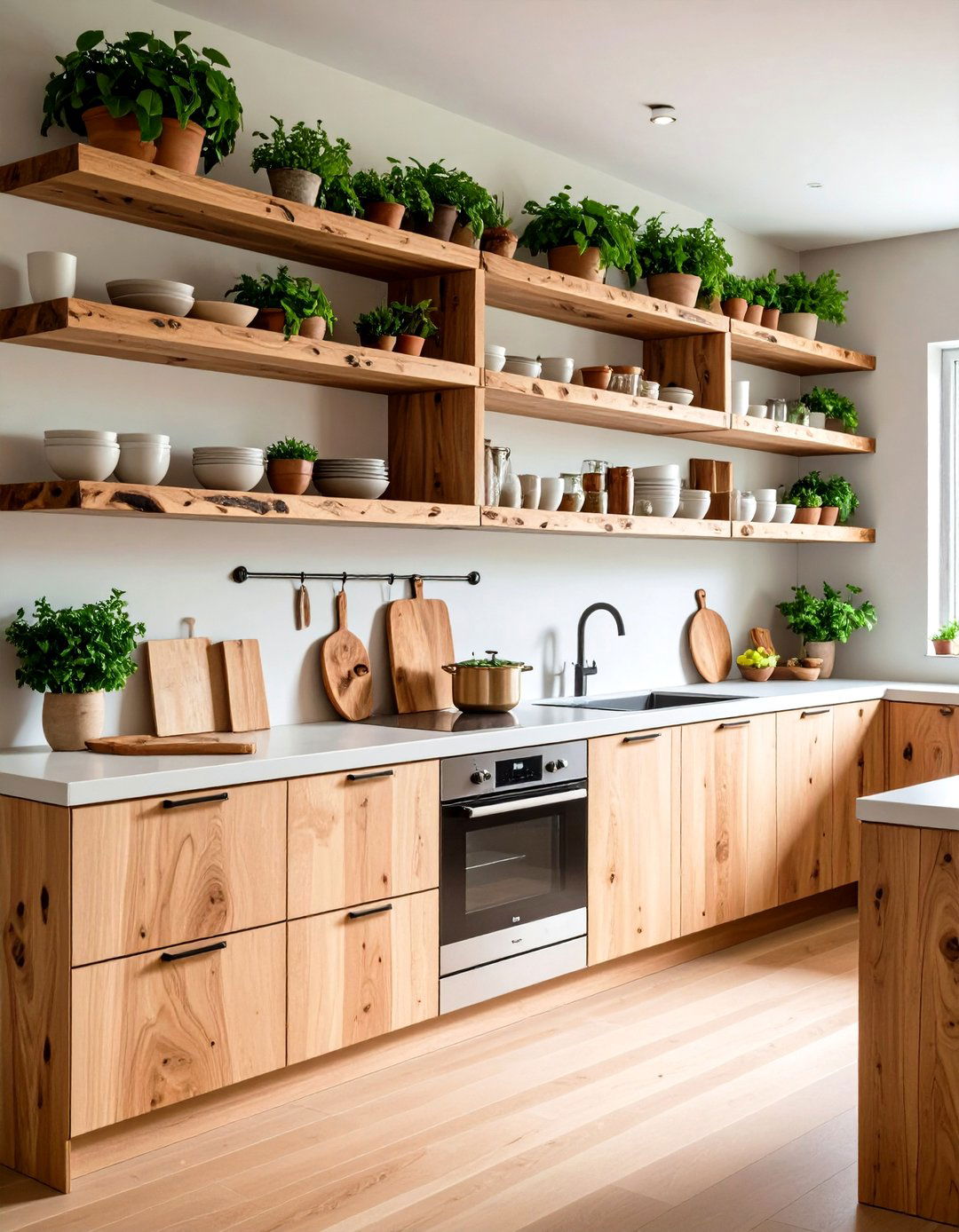
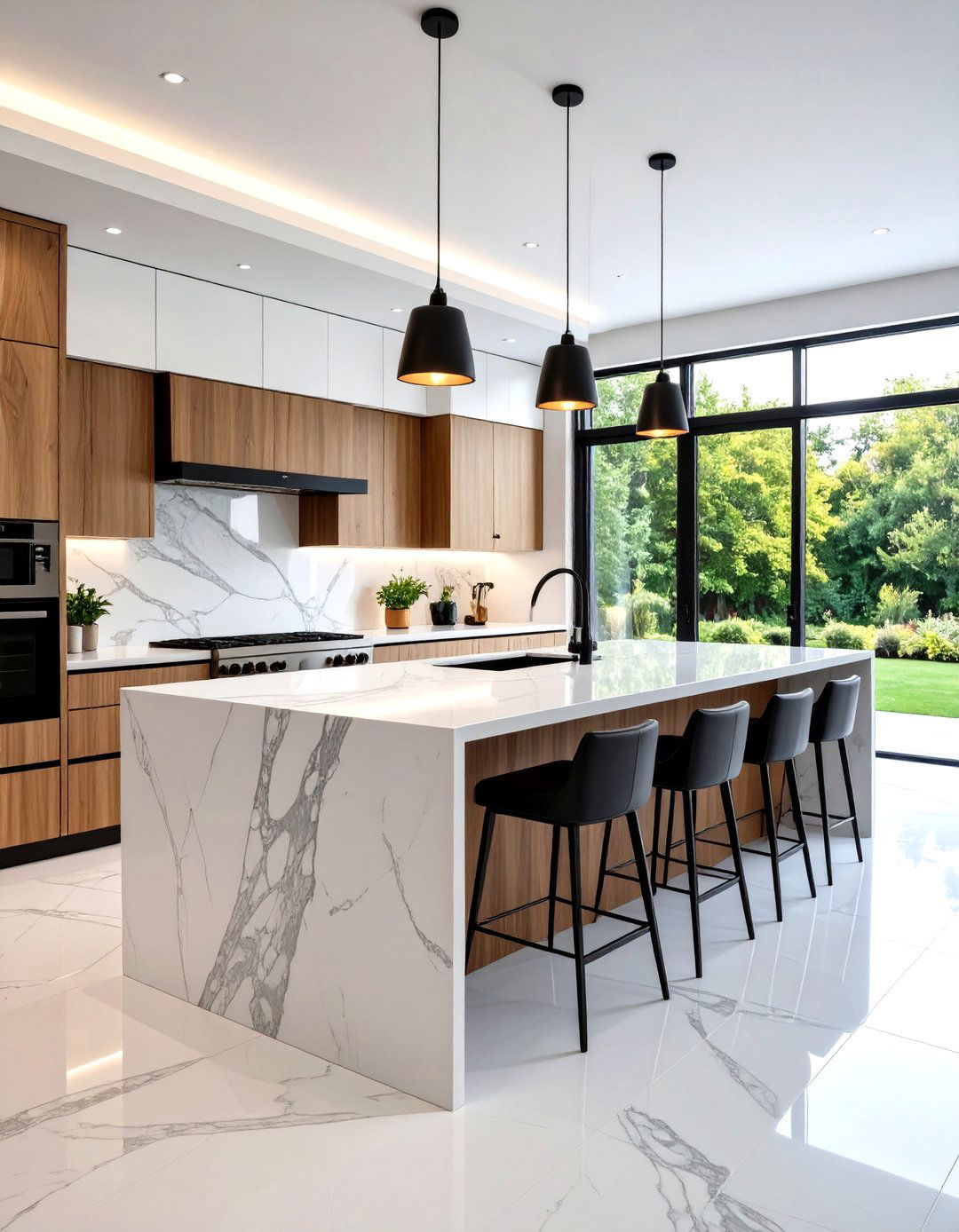
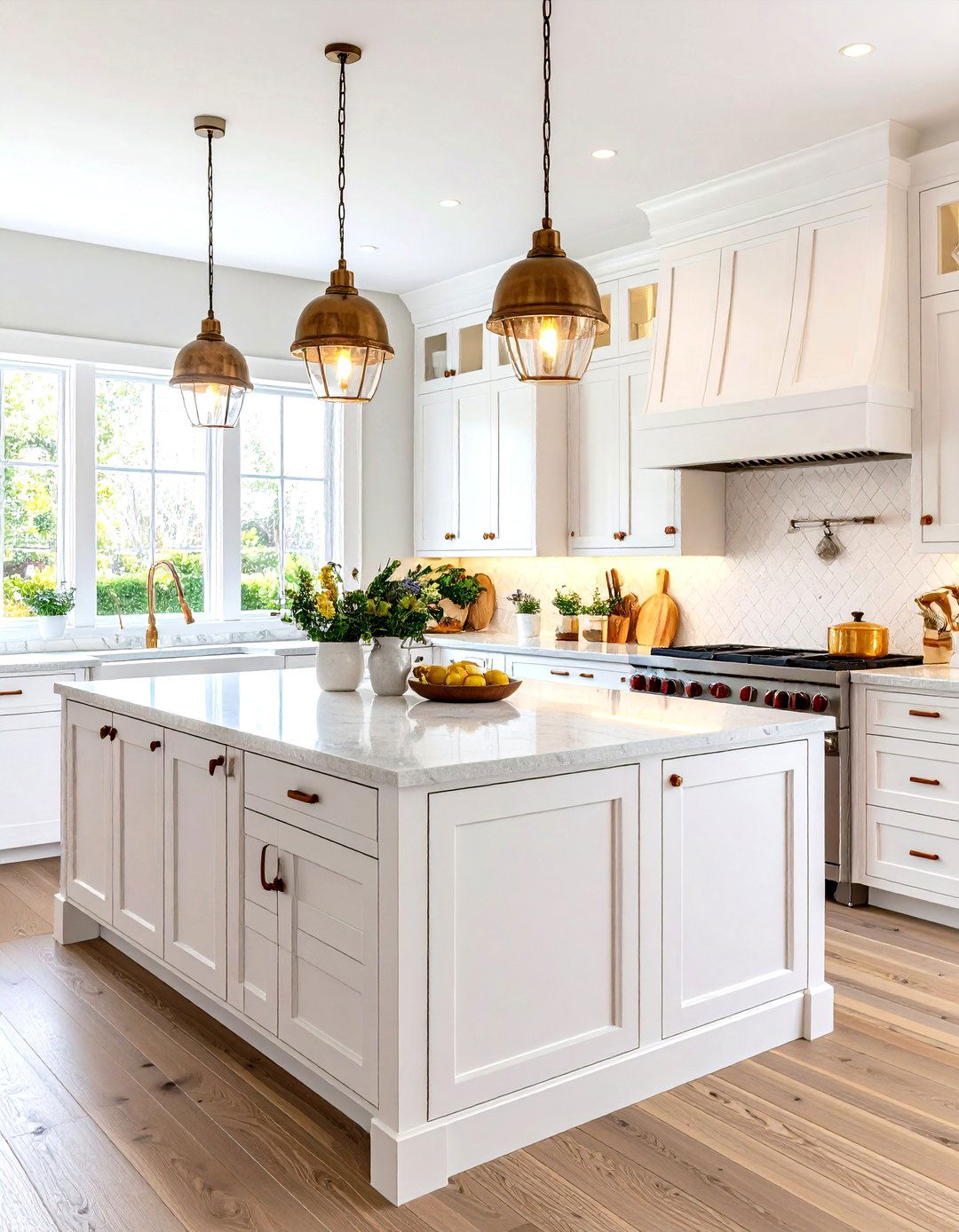

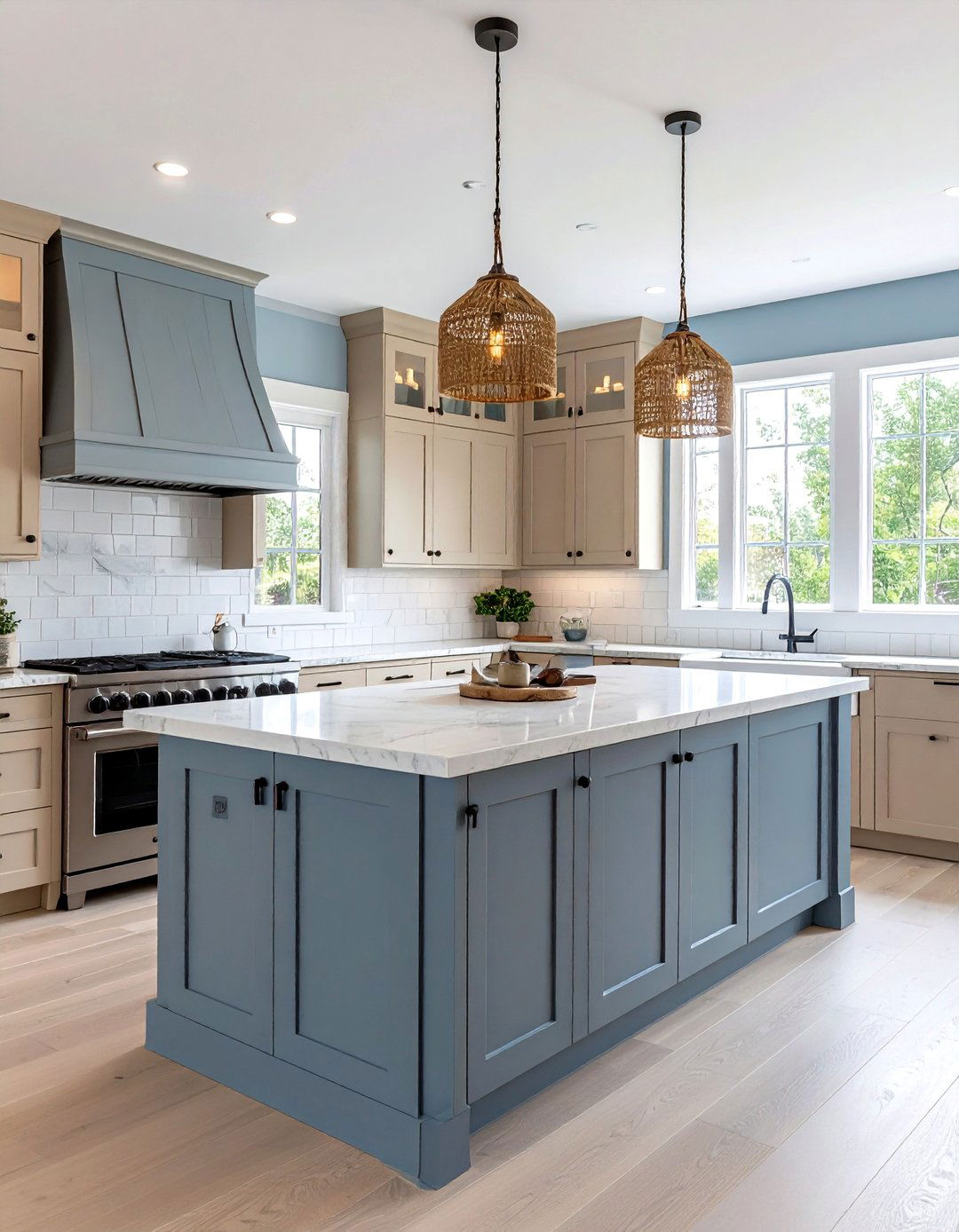
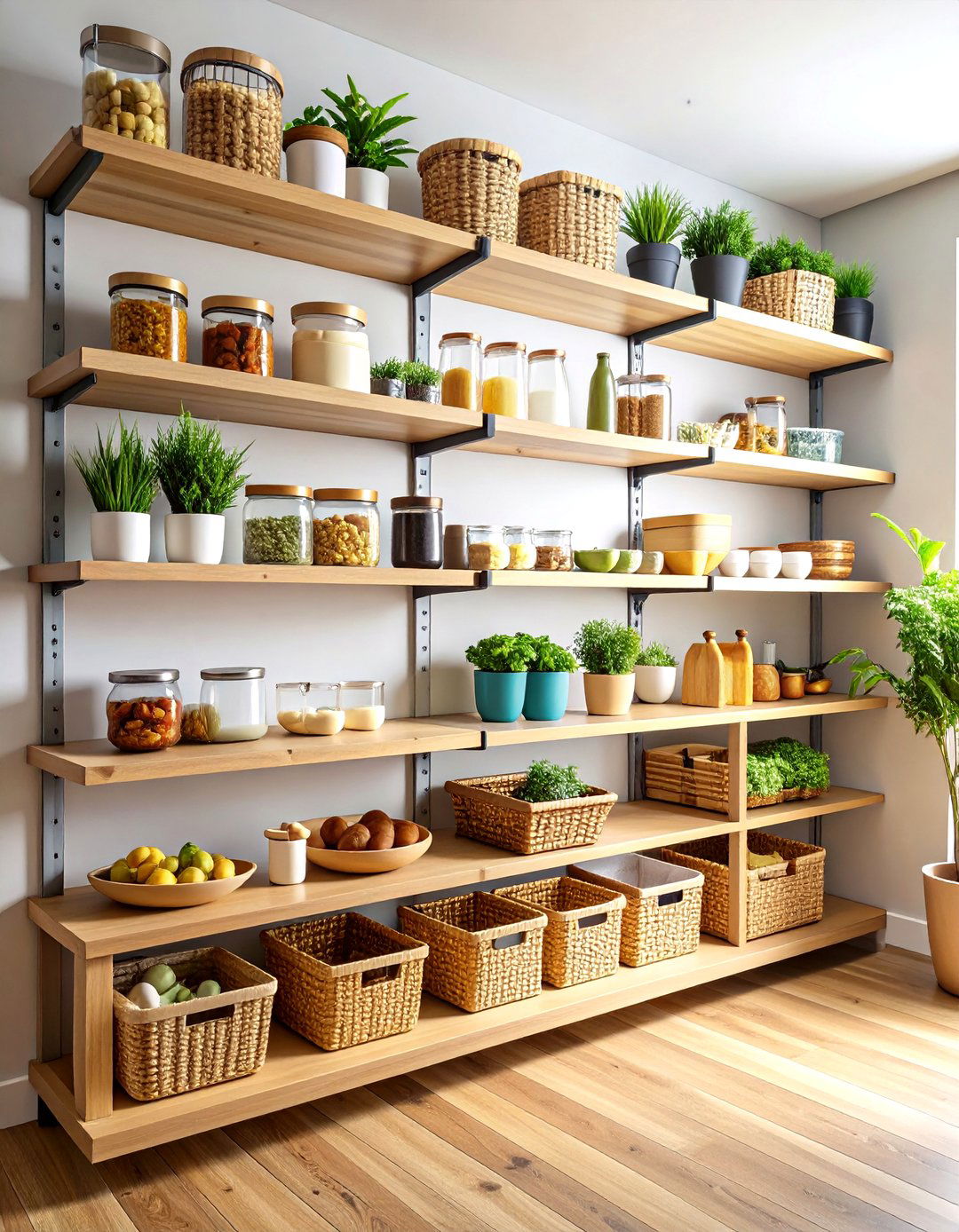
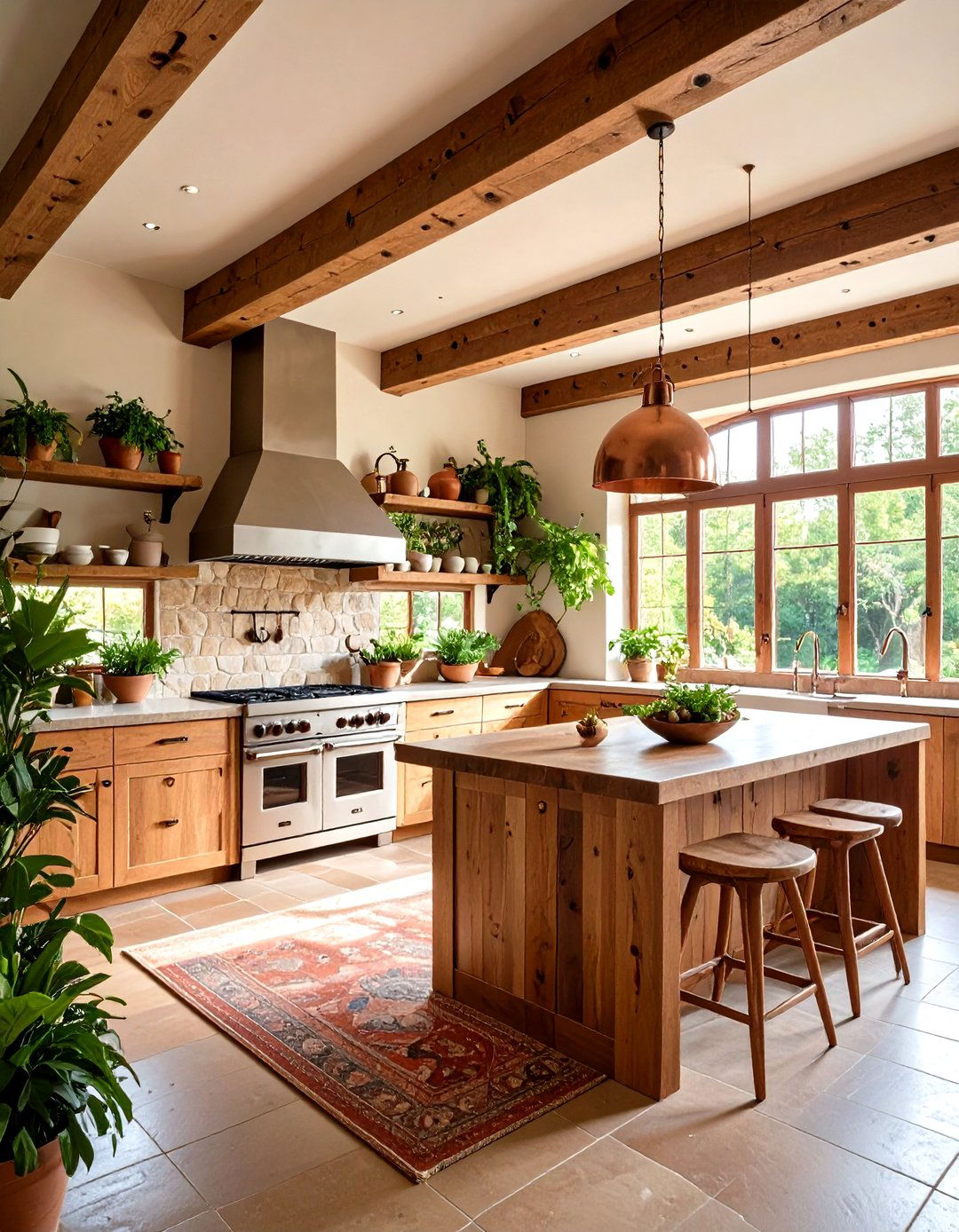
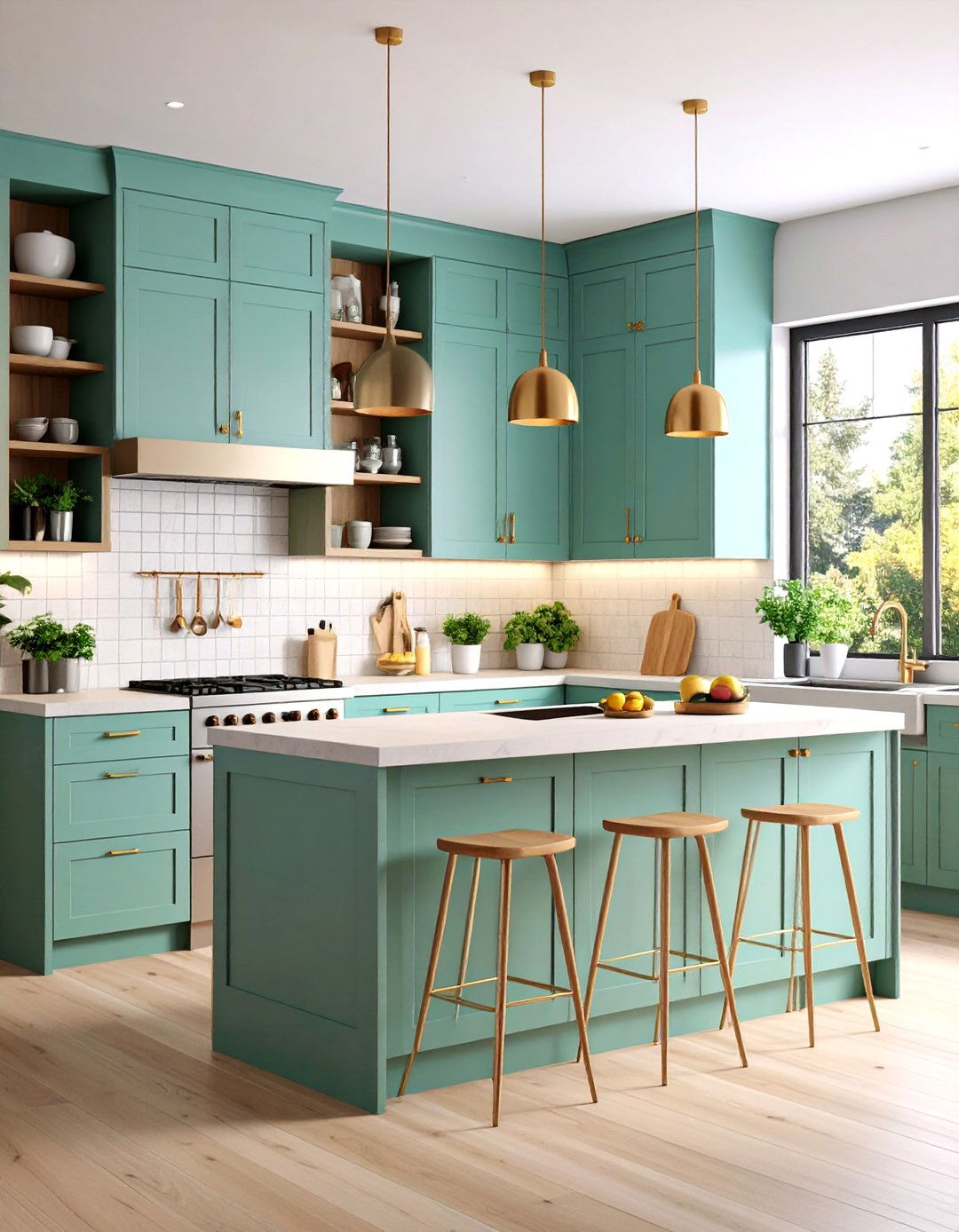
Leave a Reply